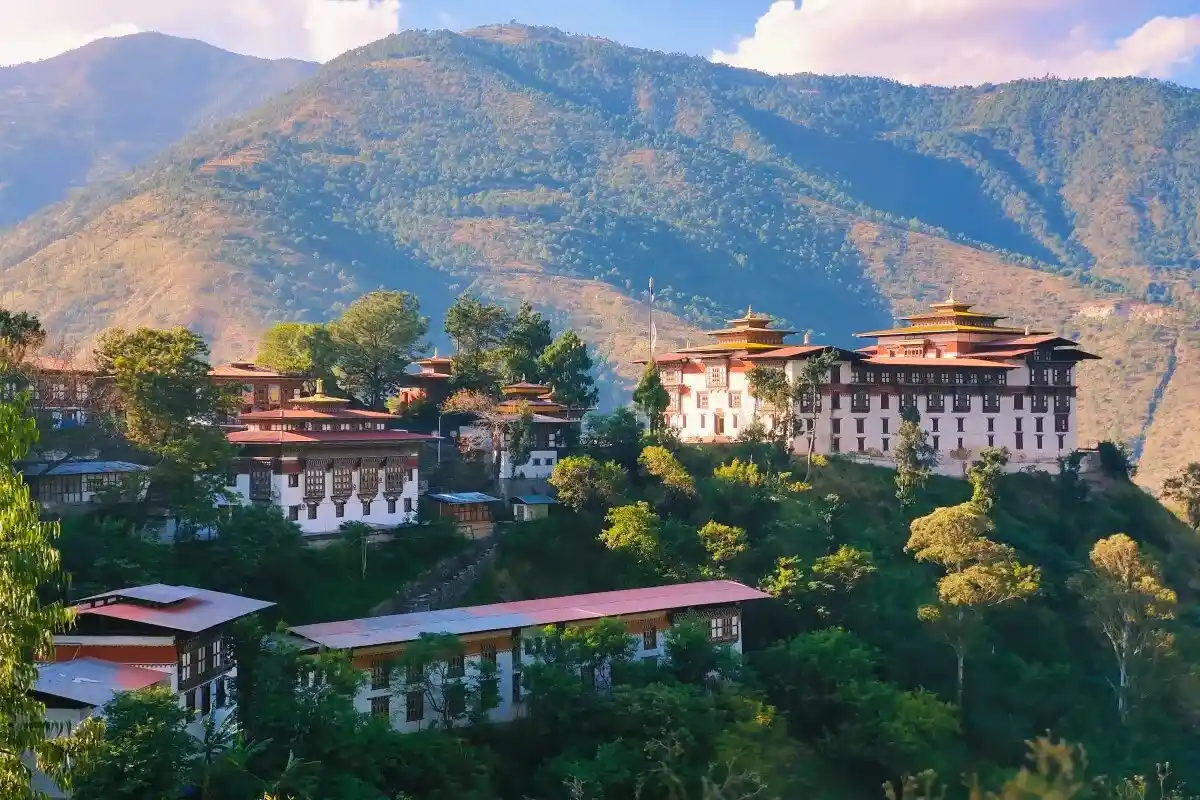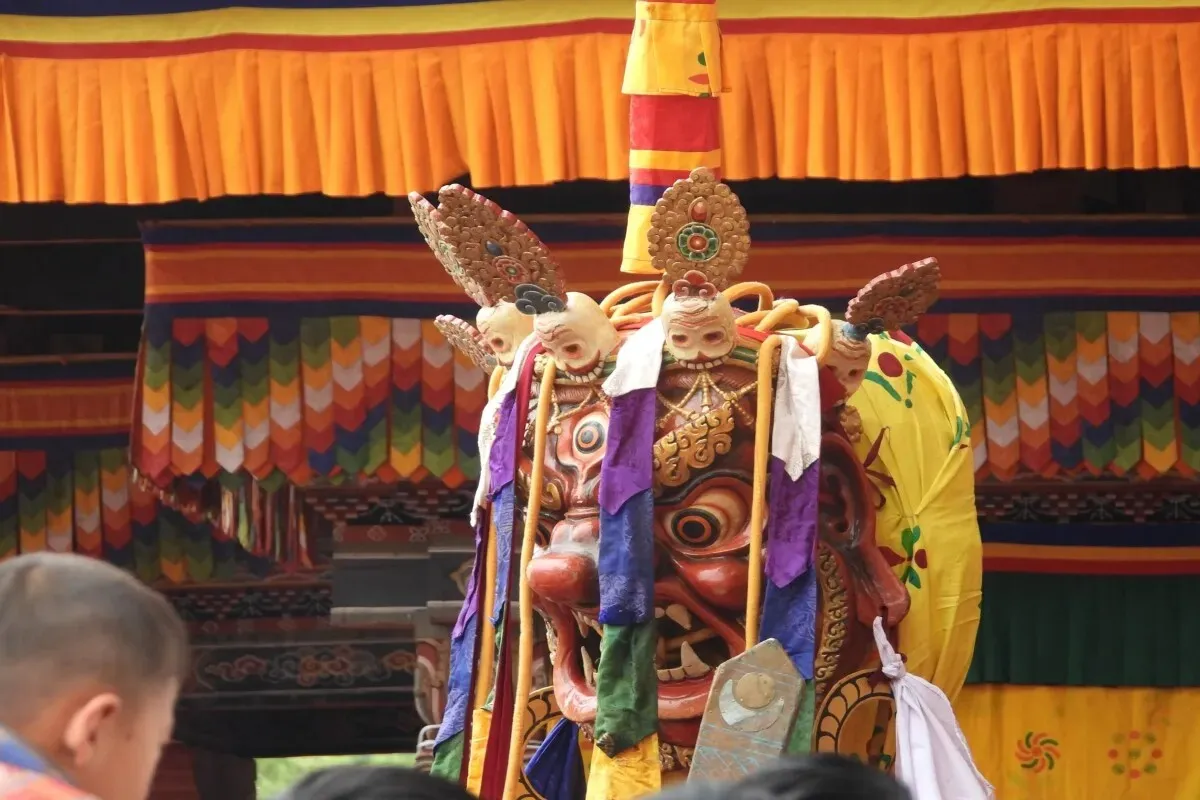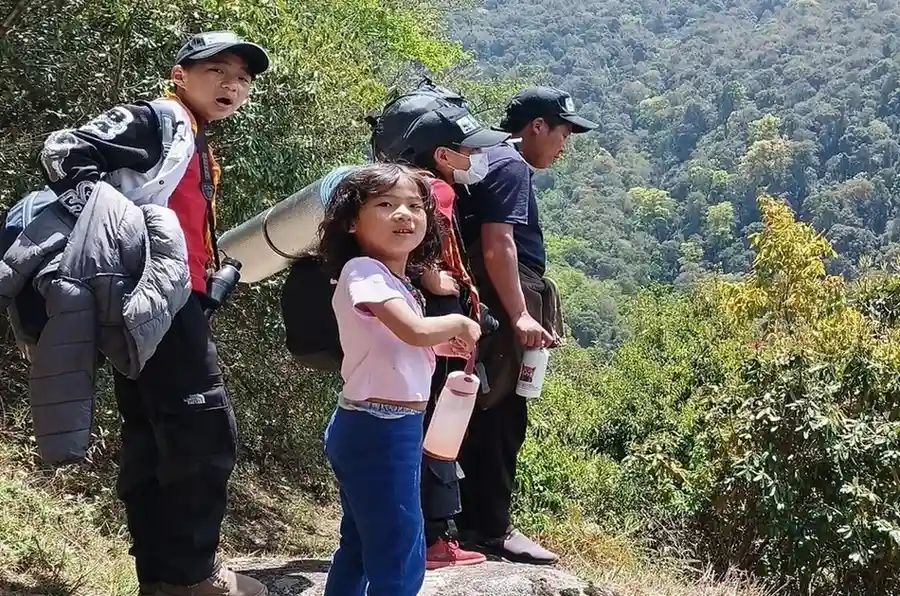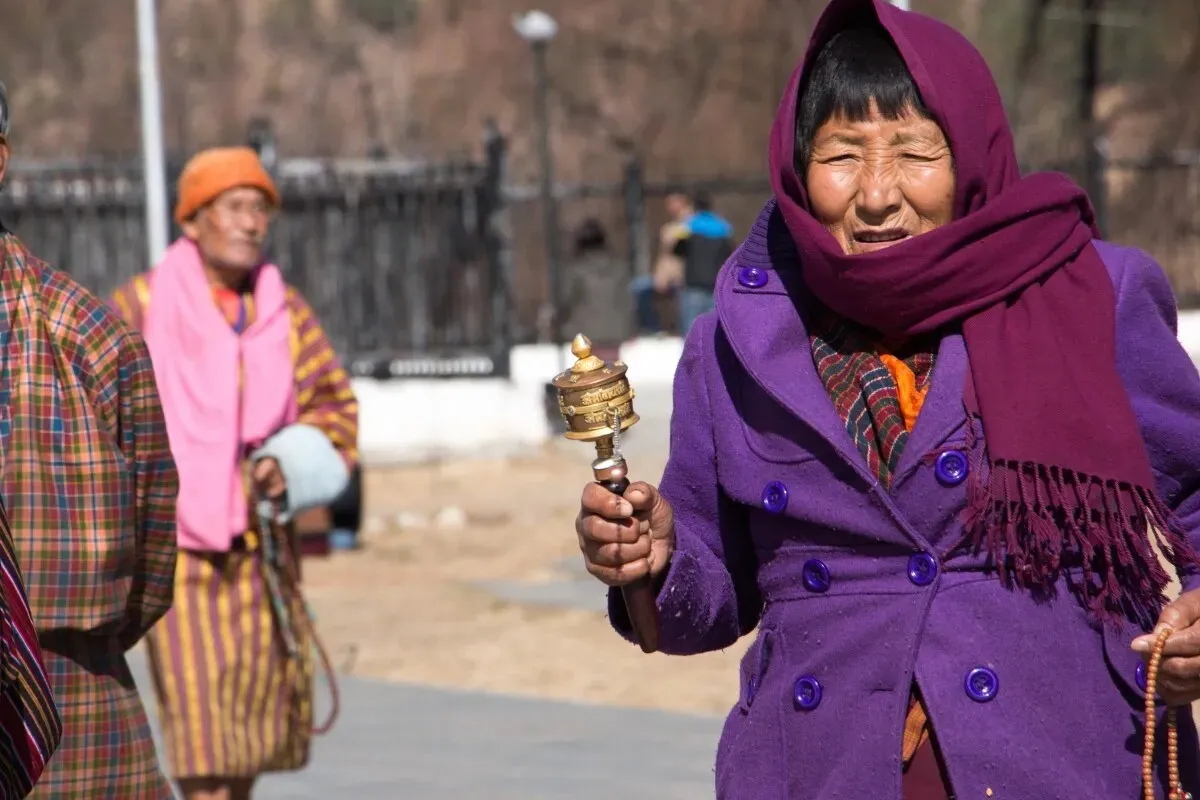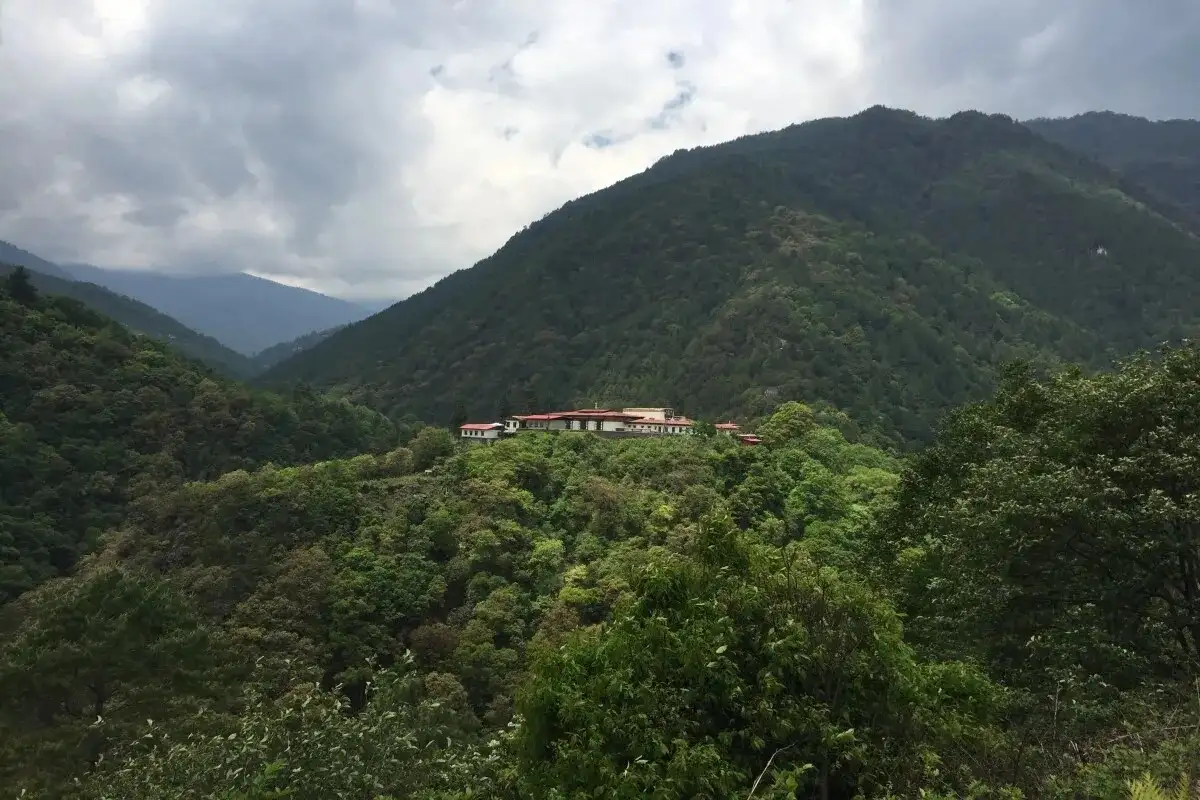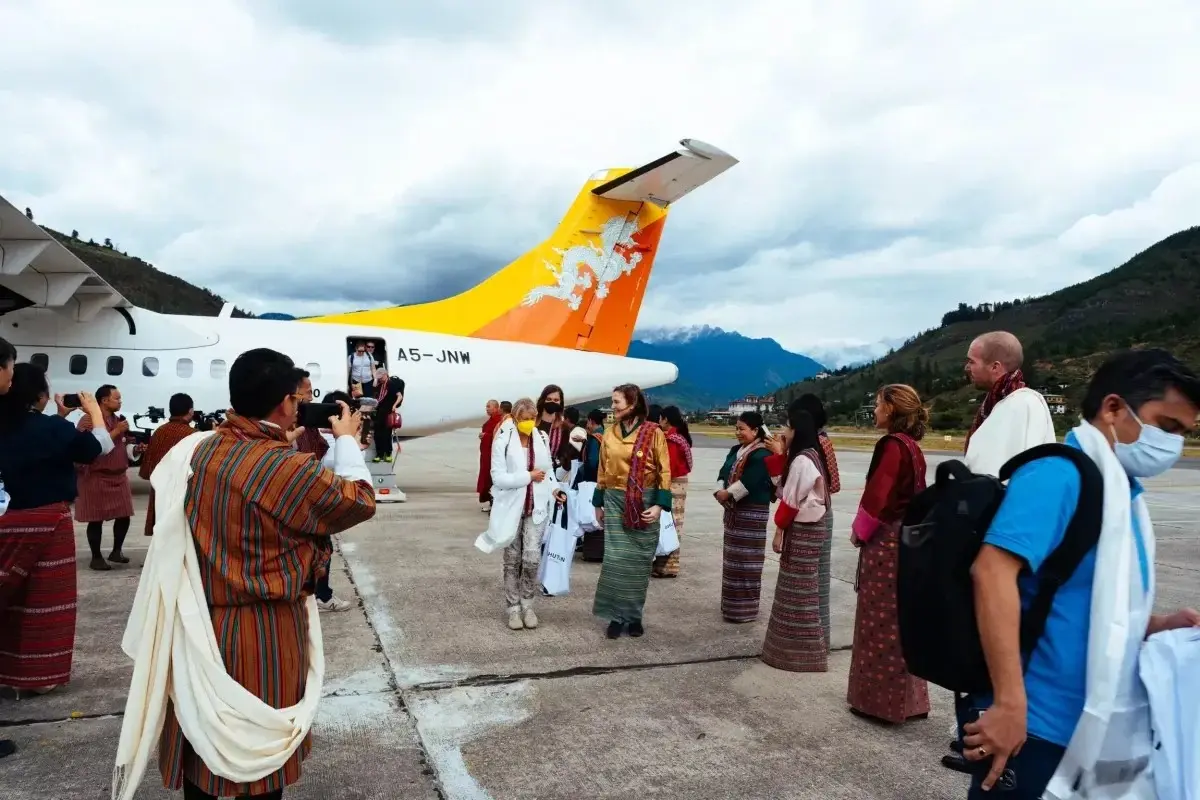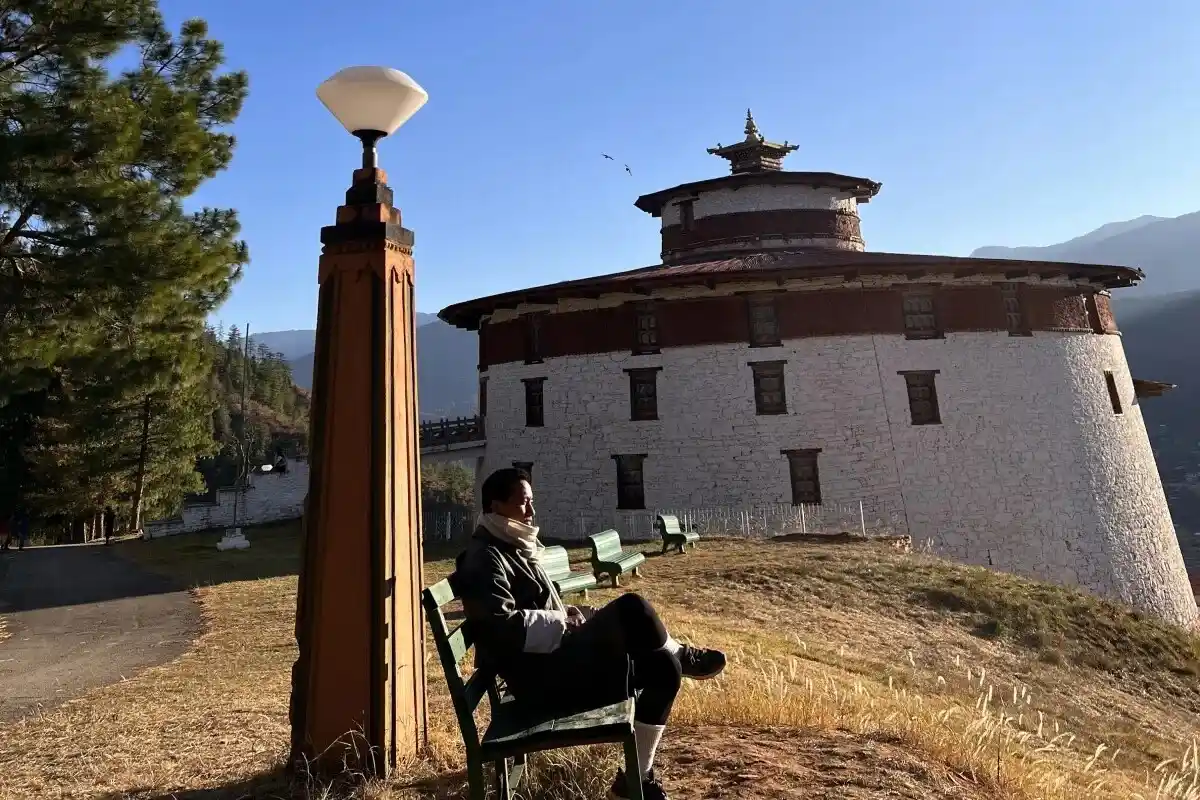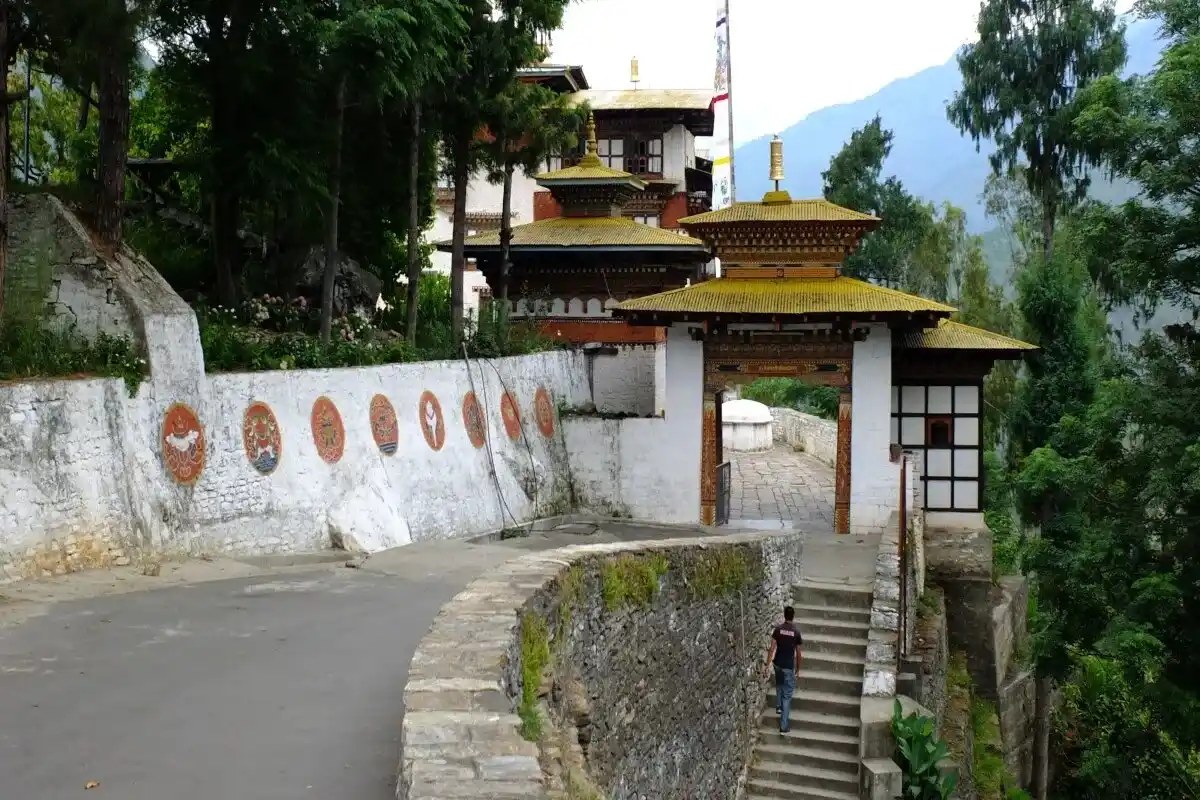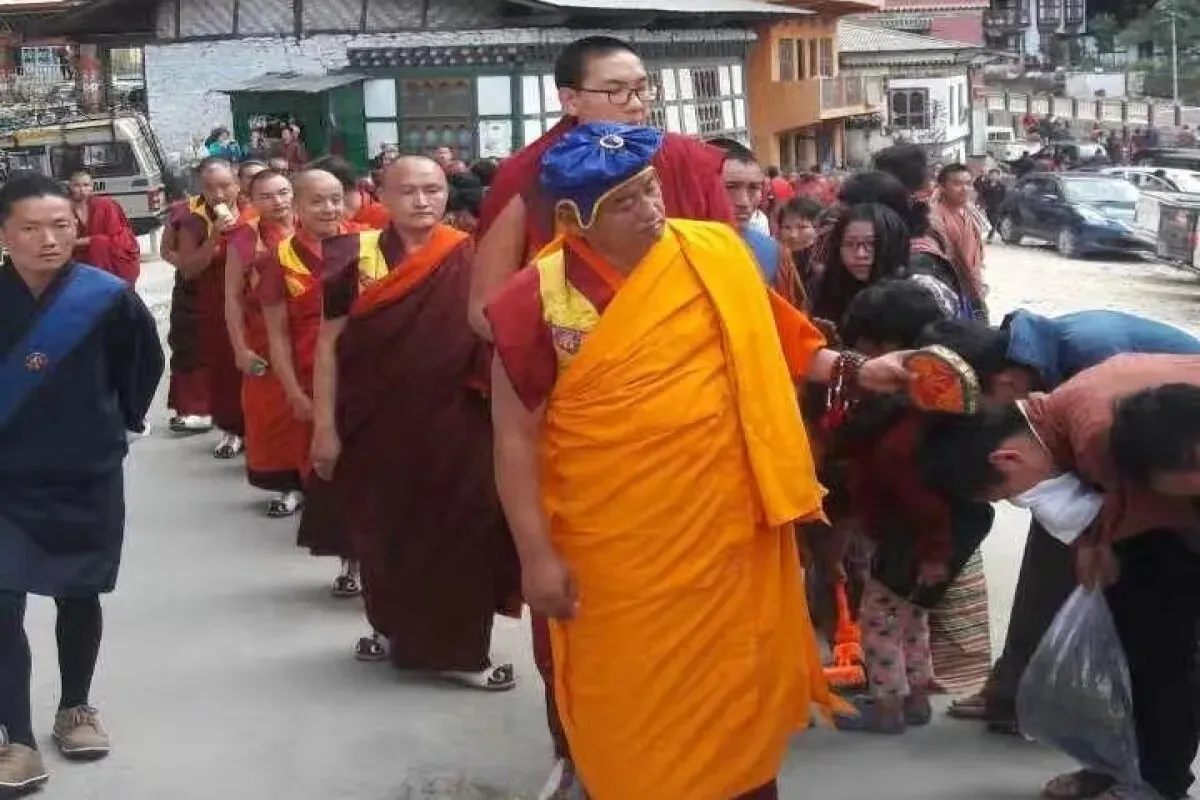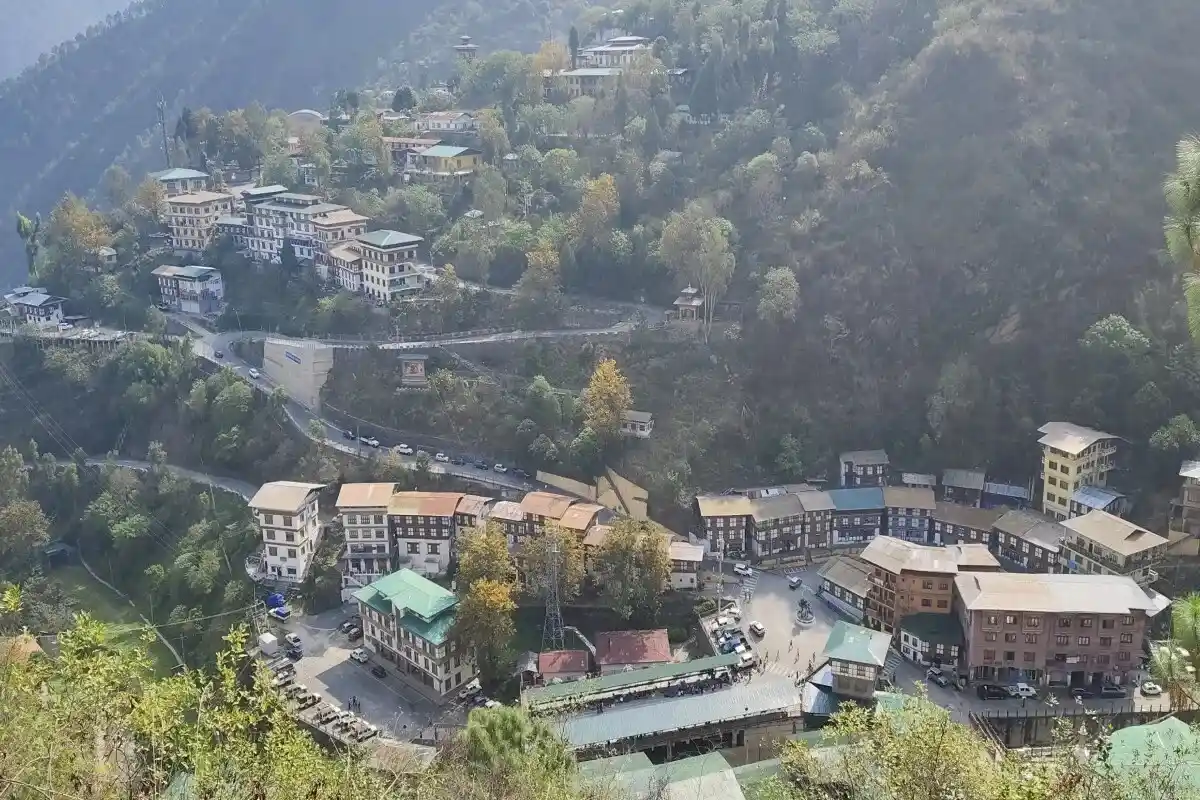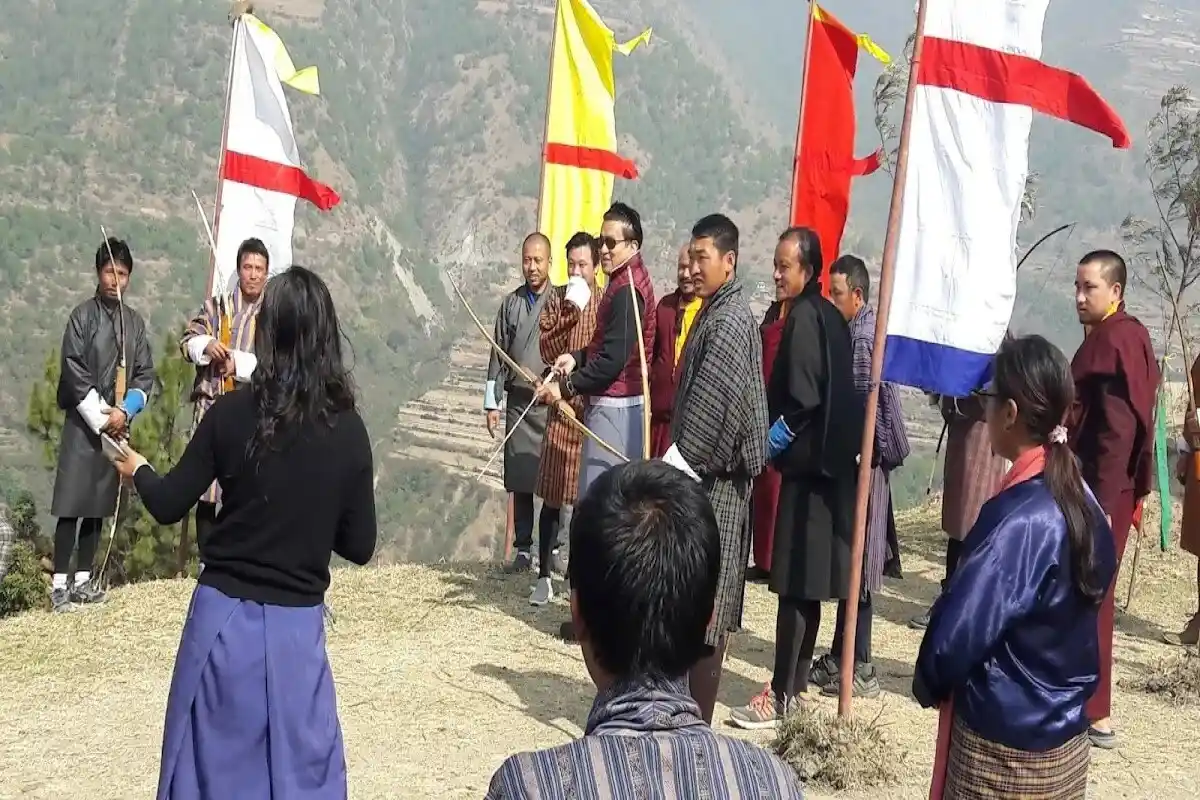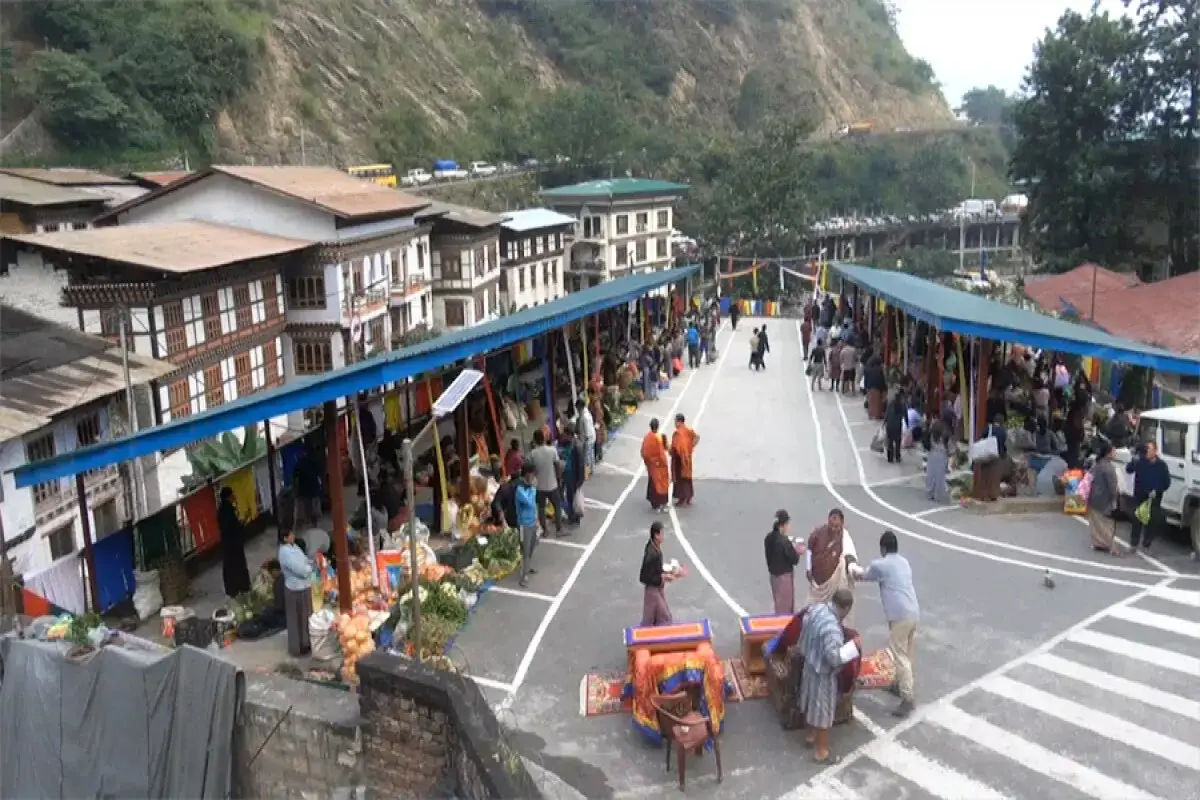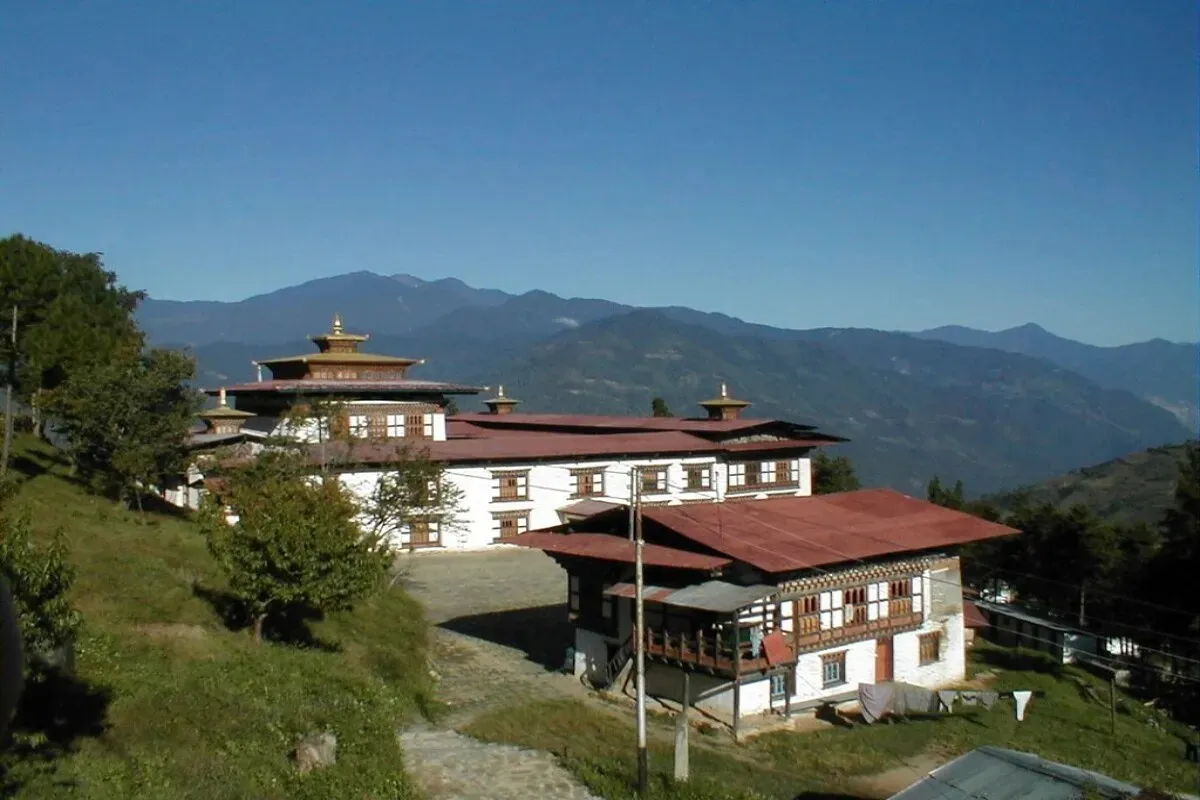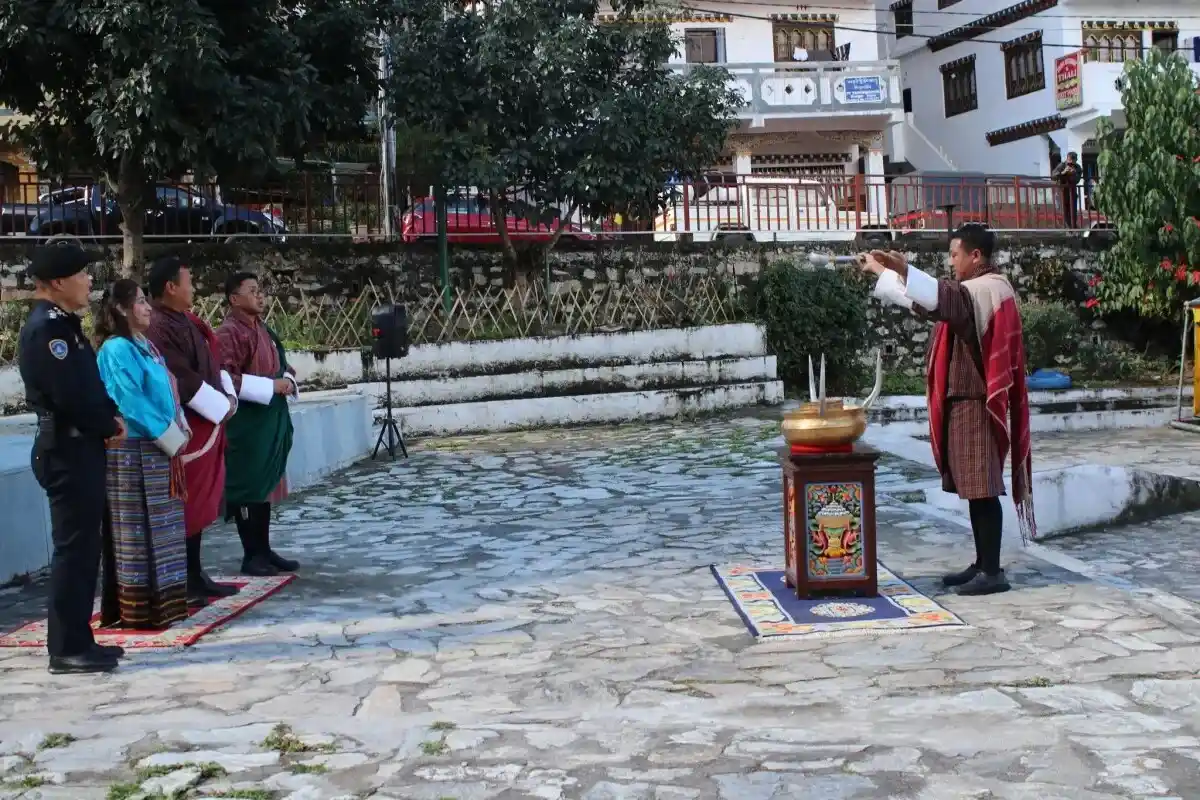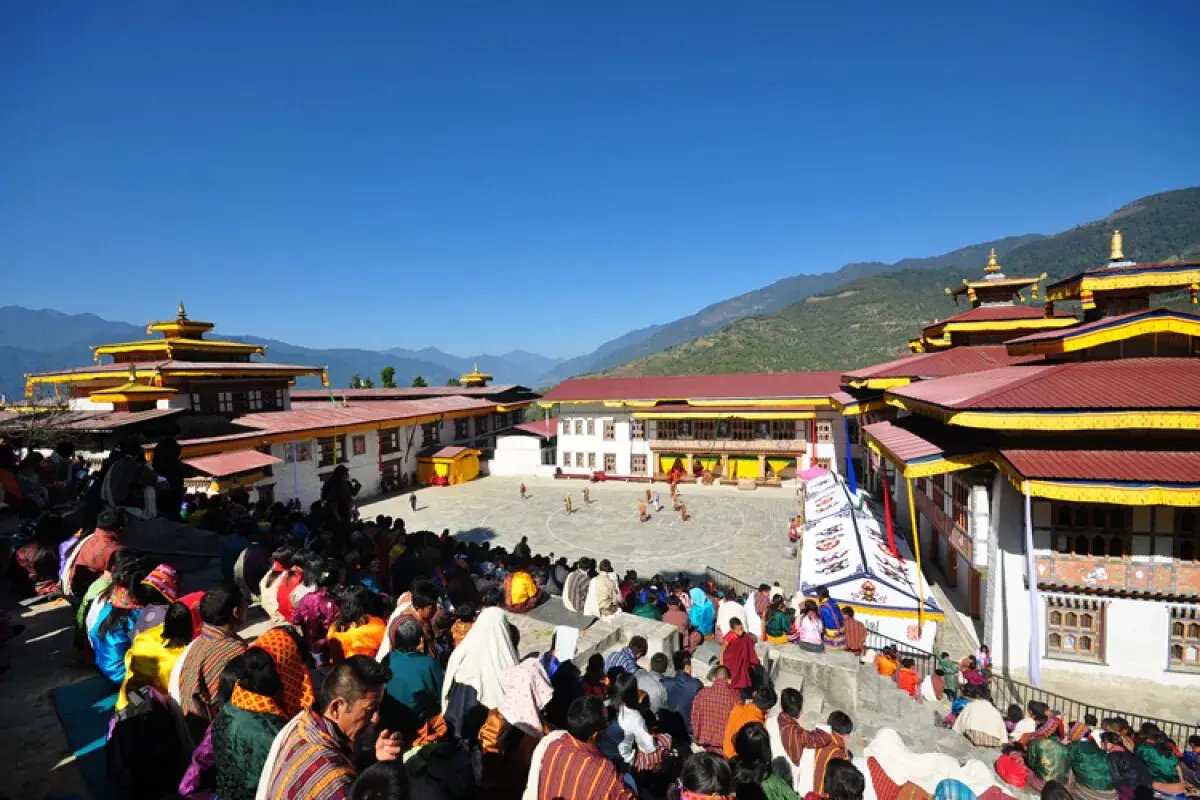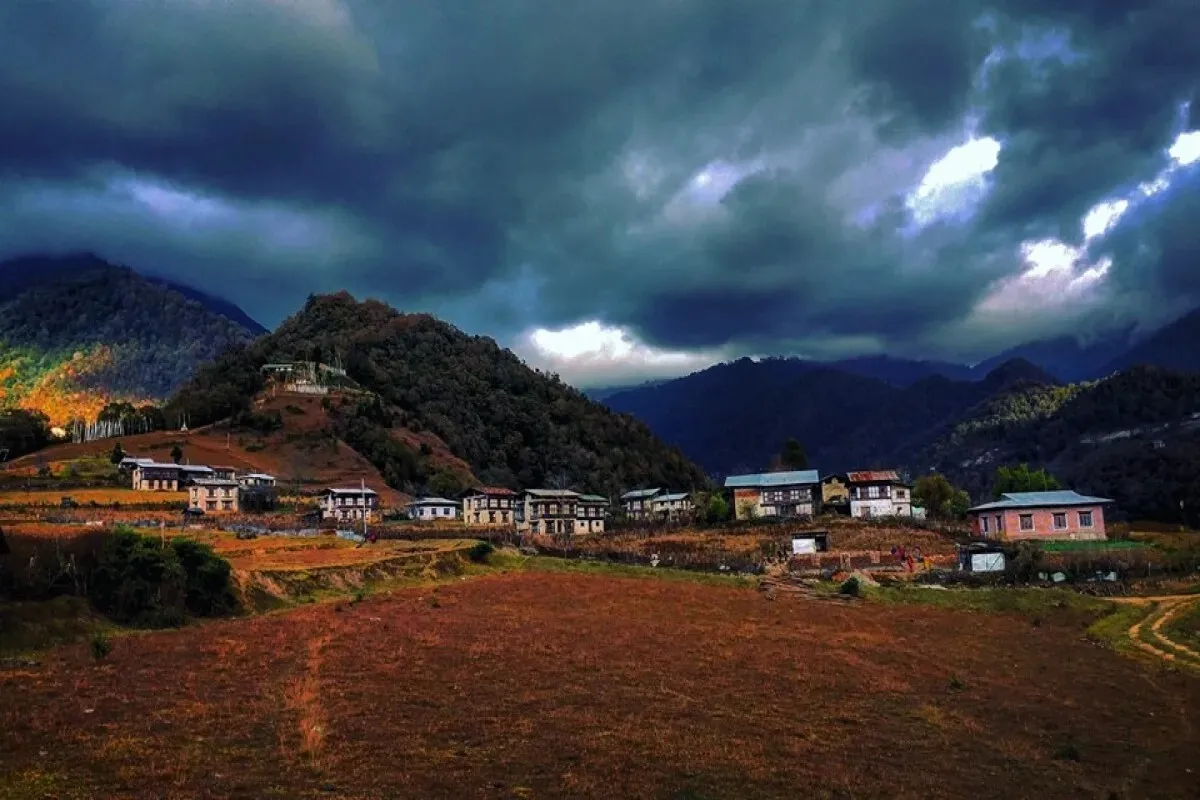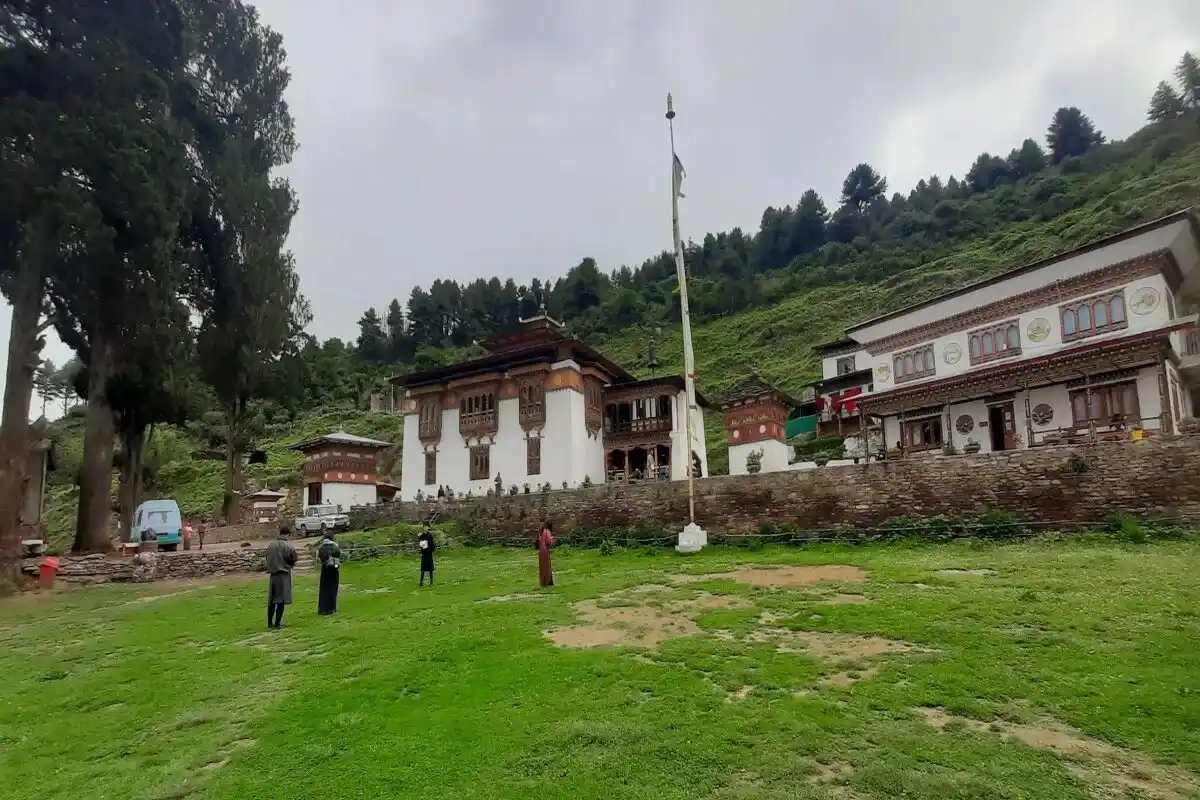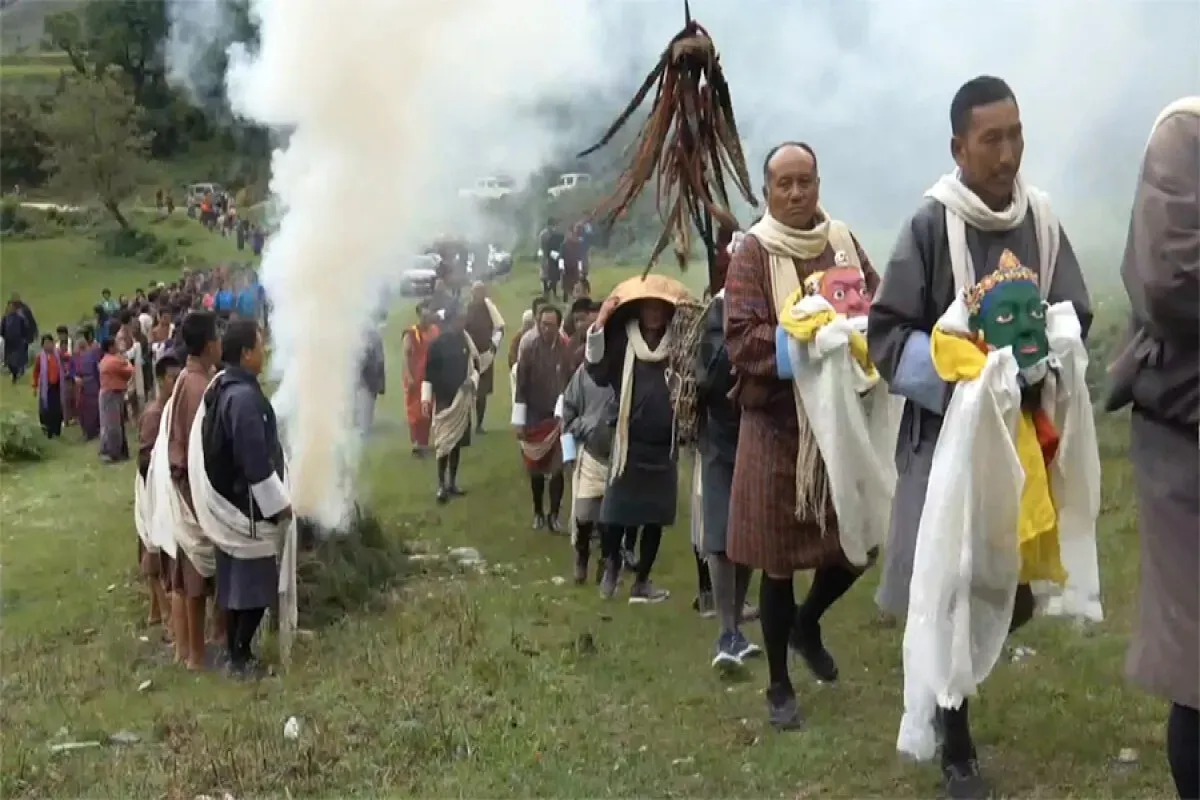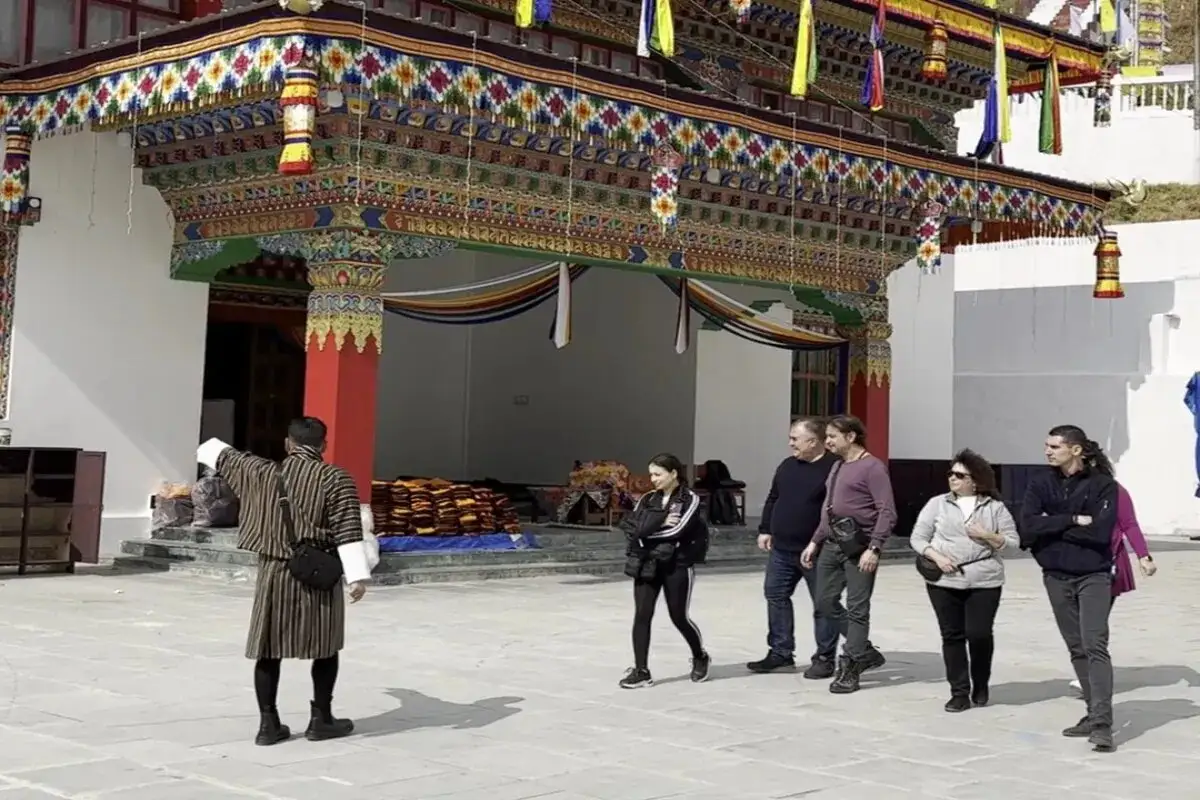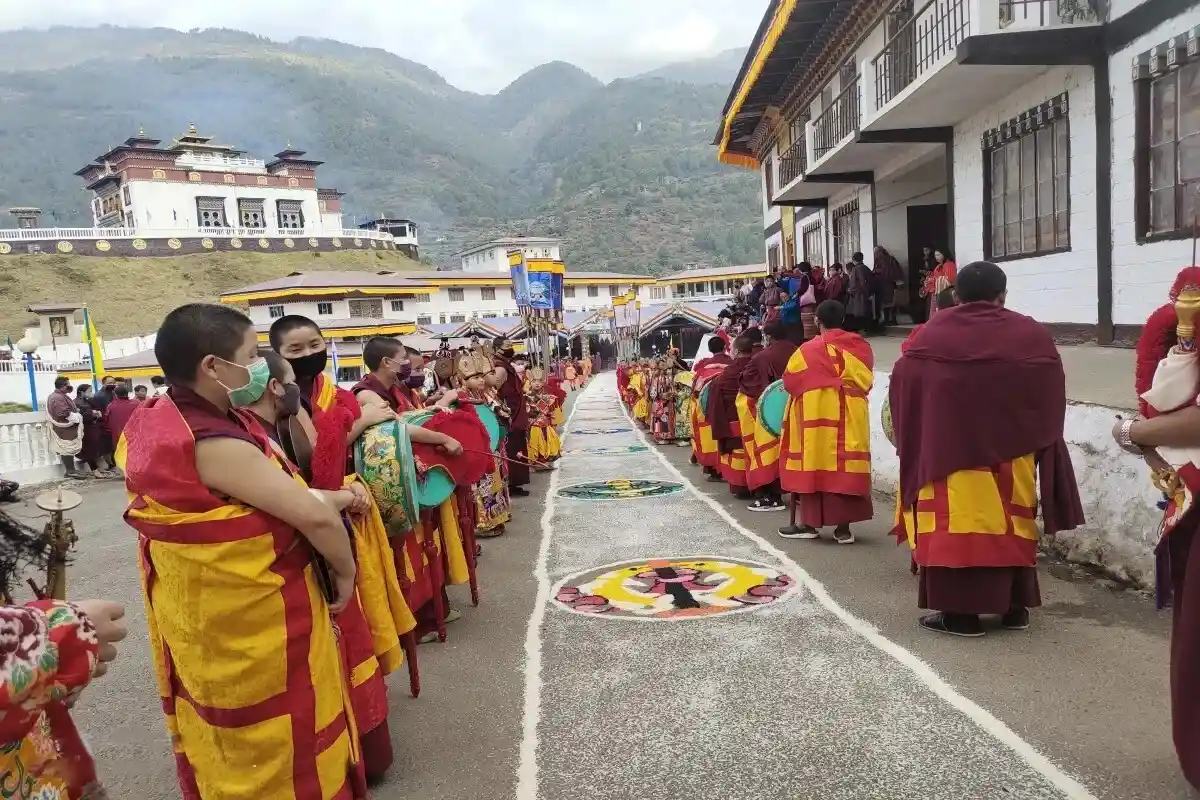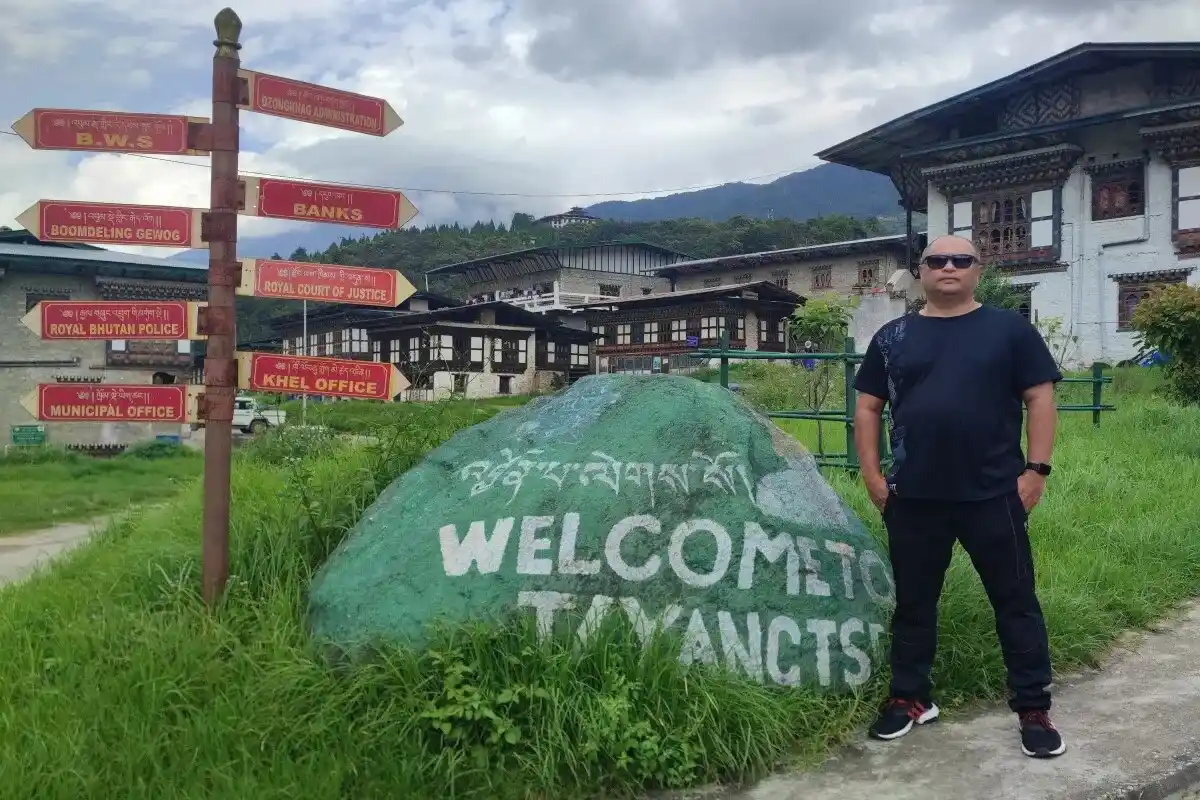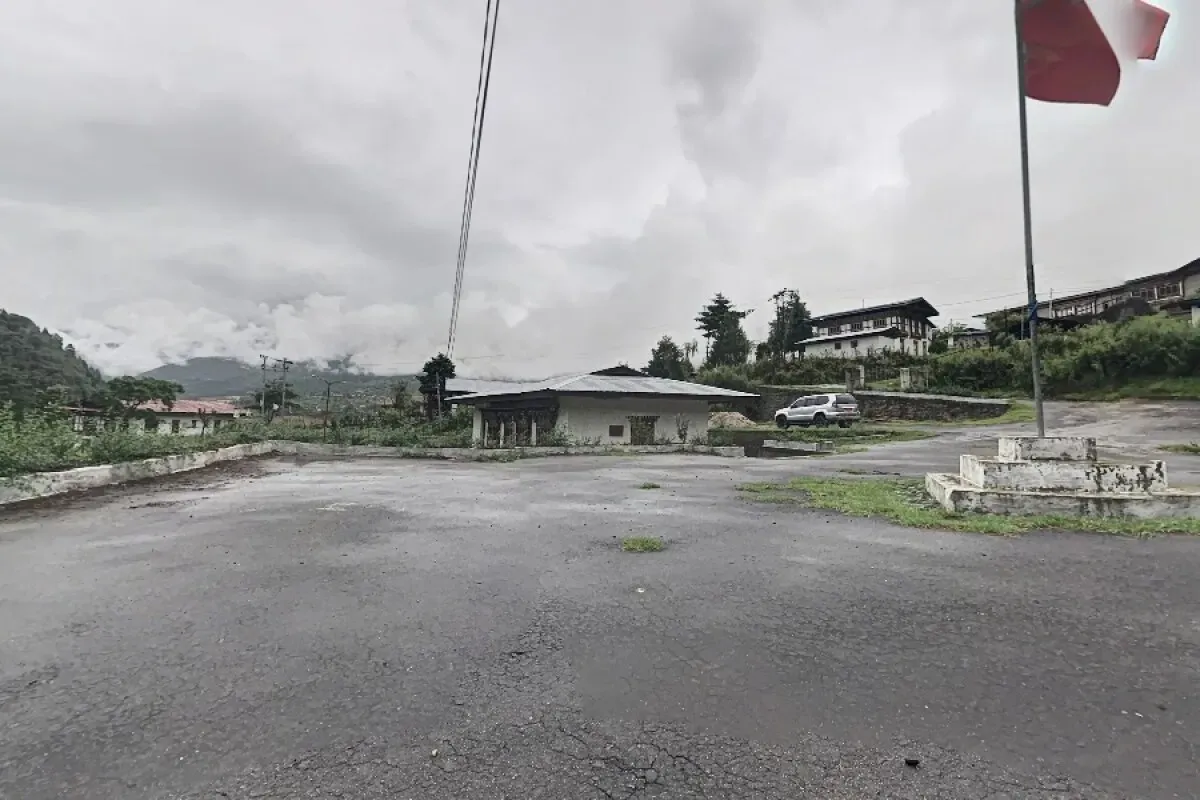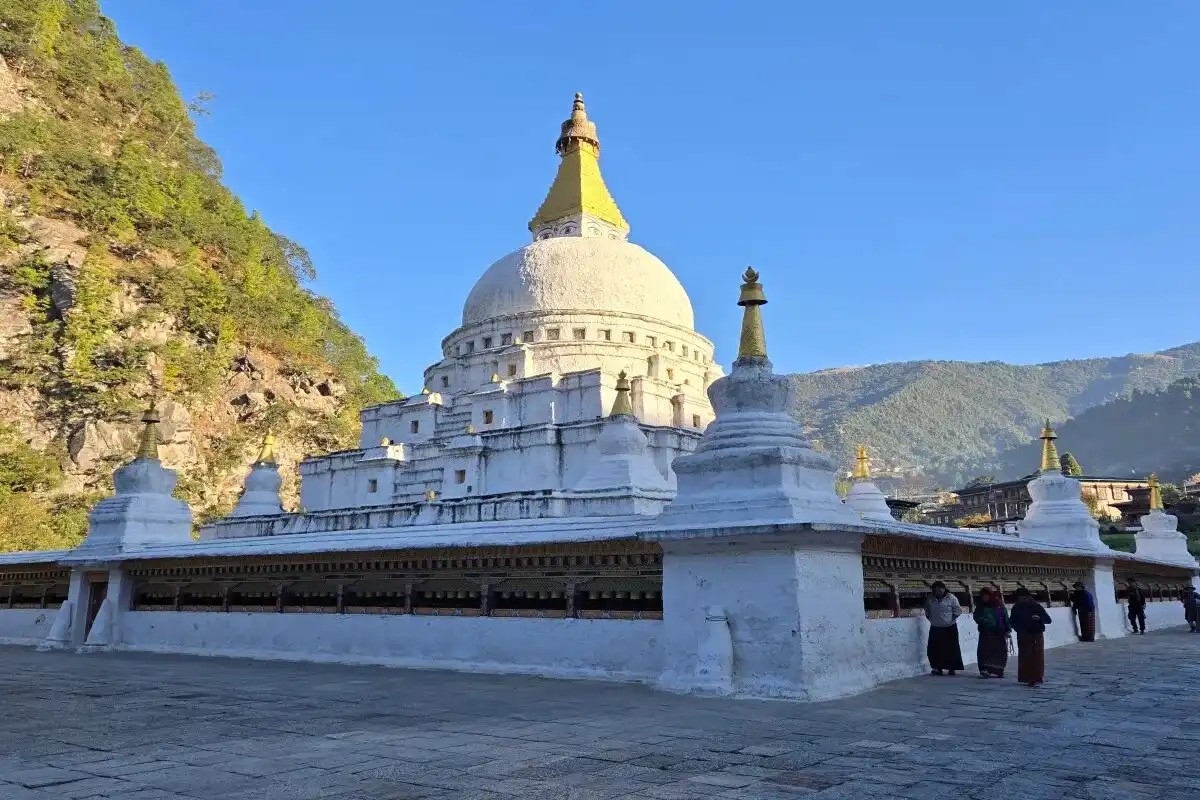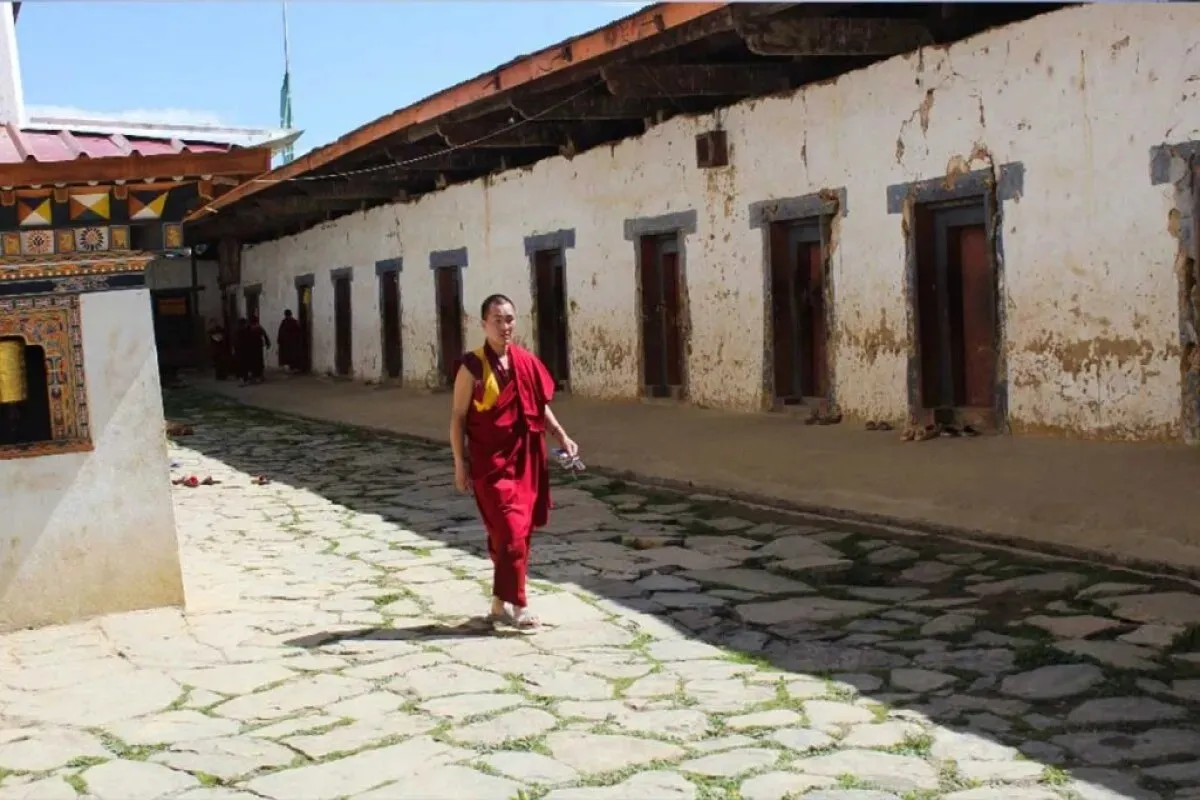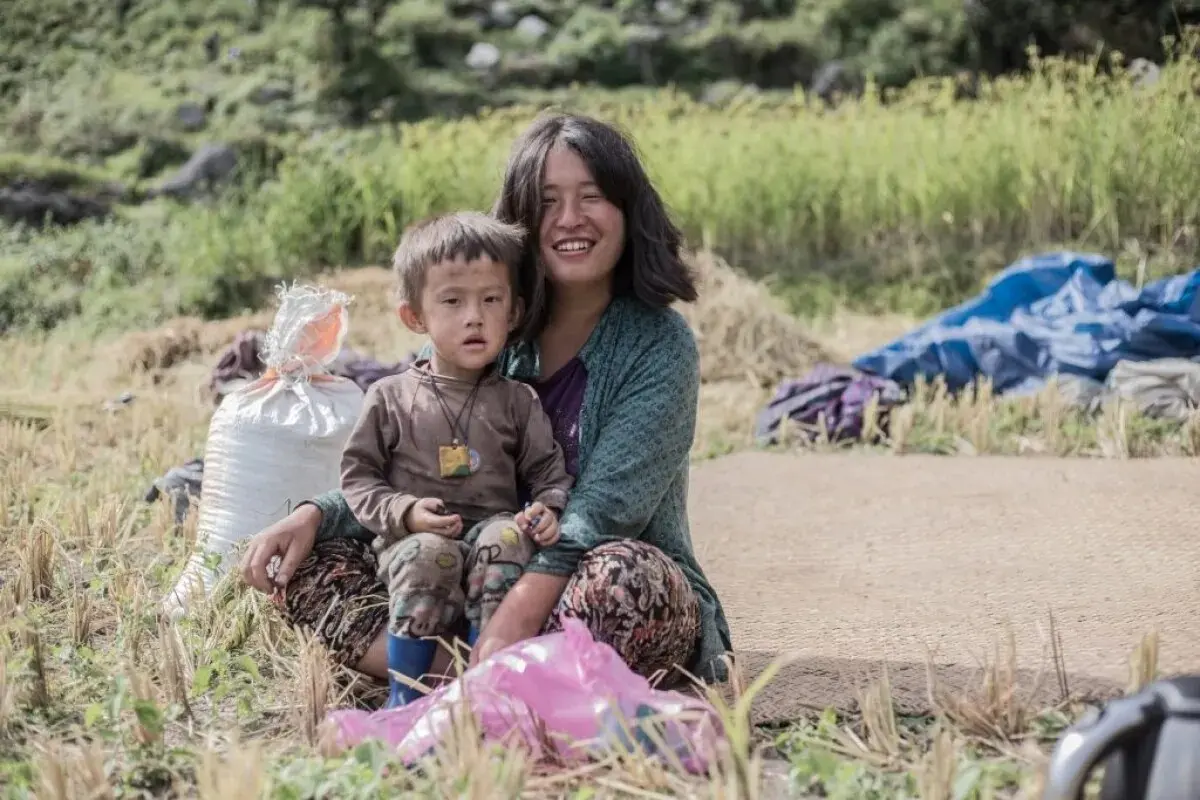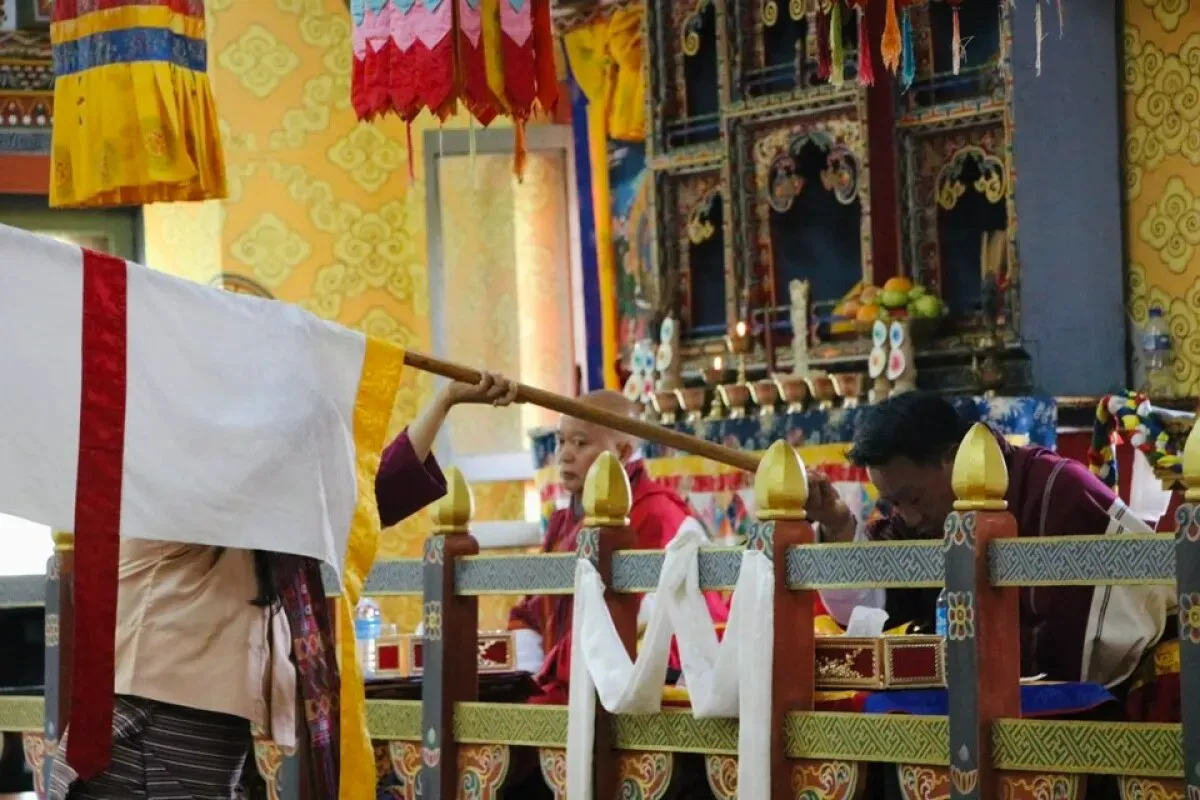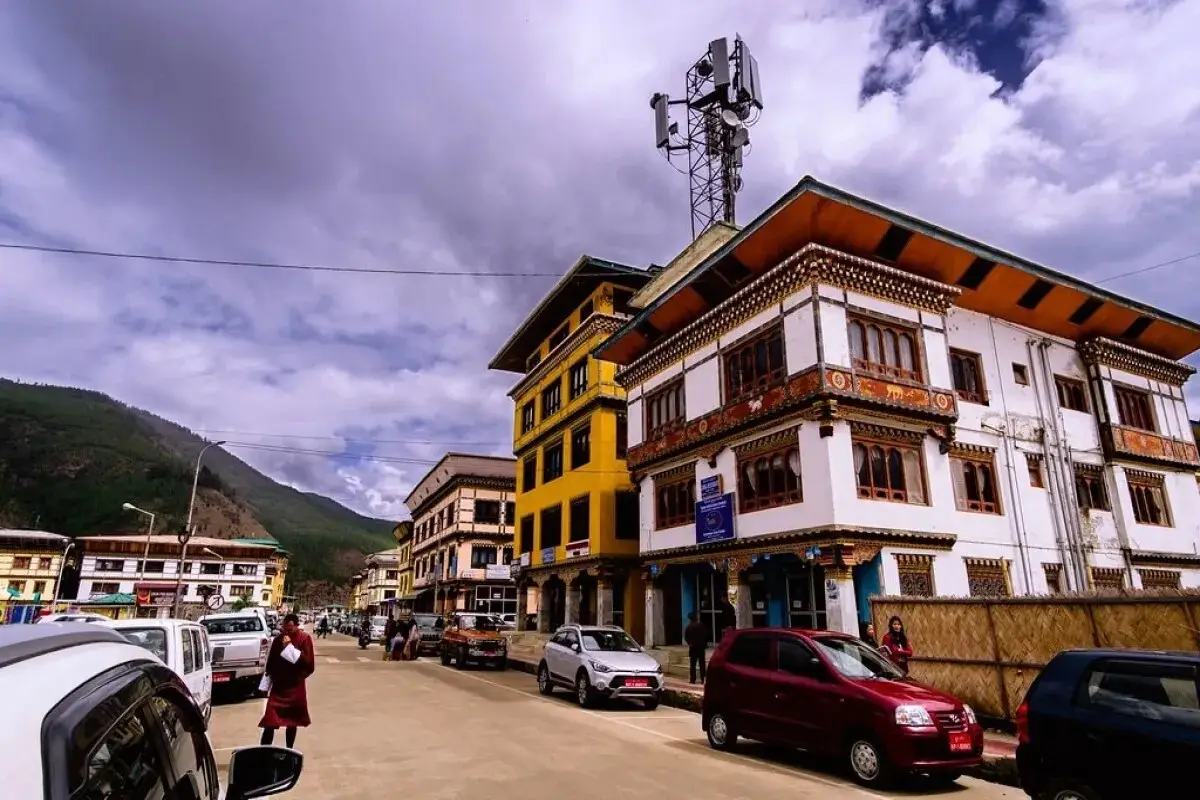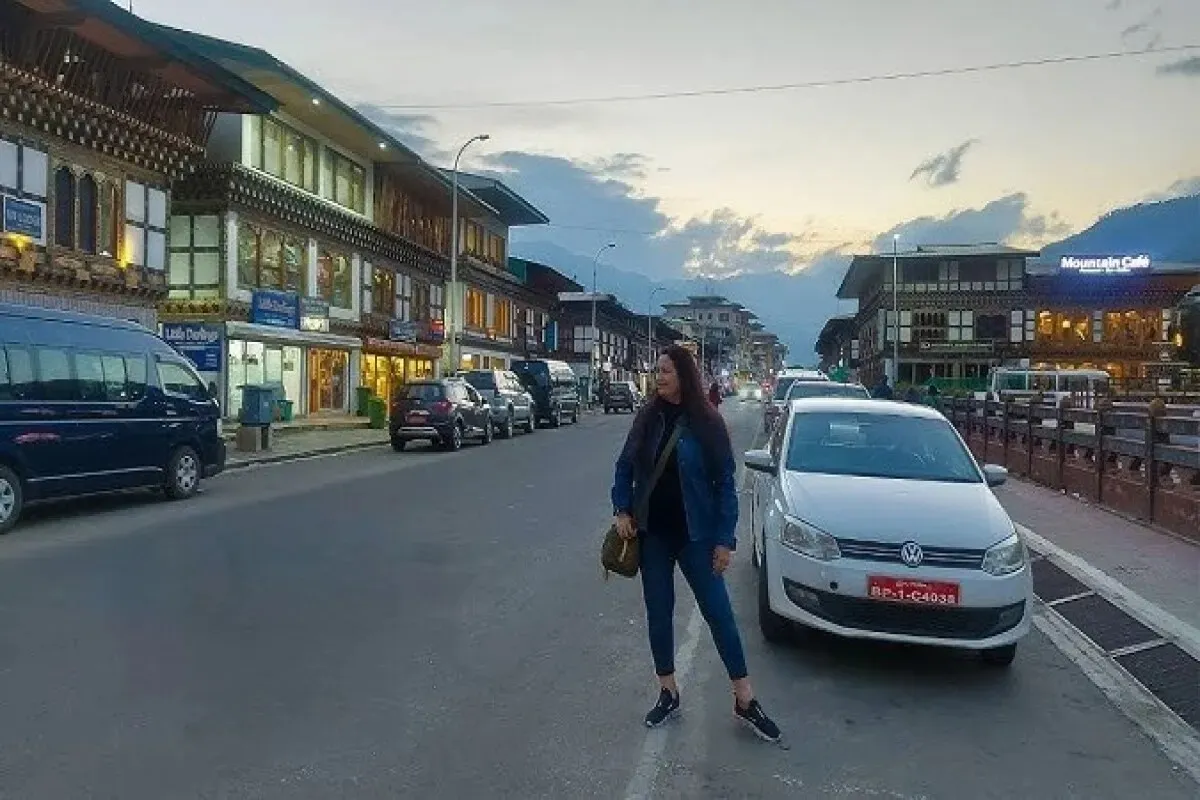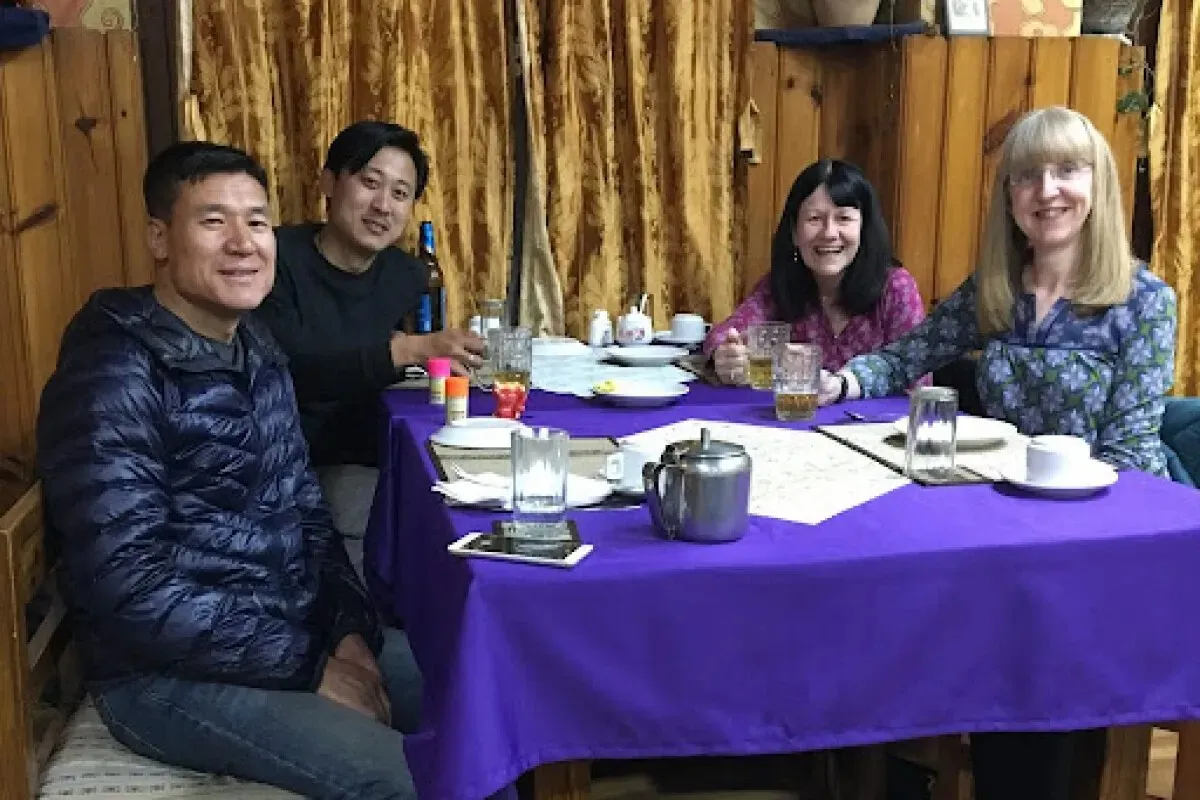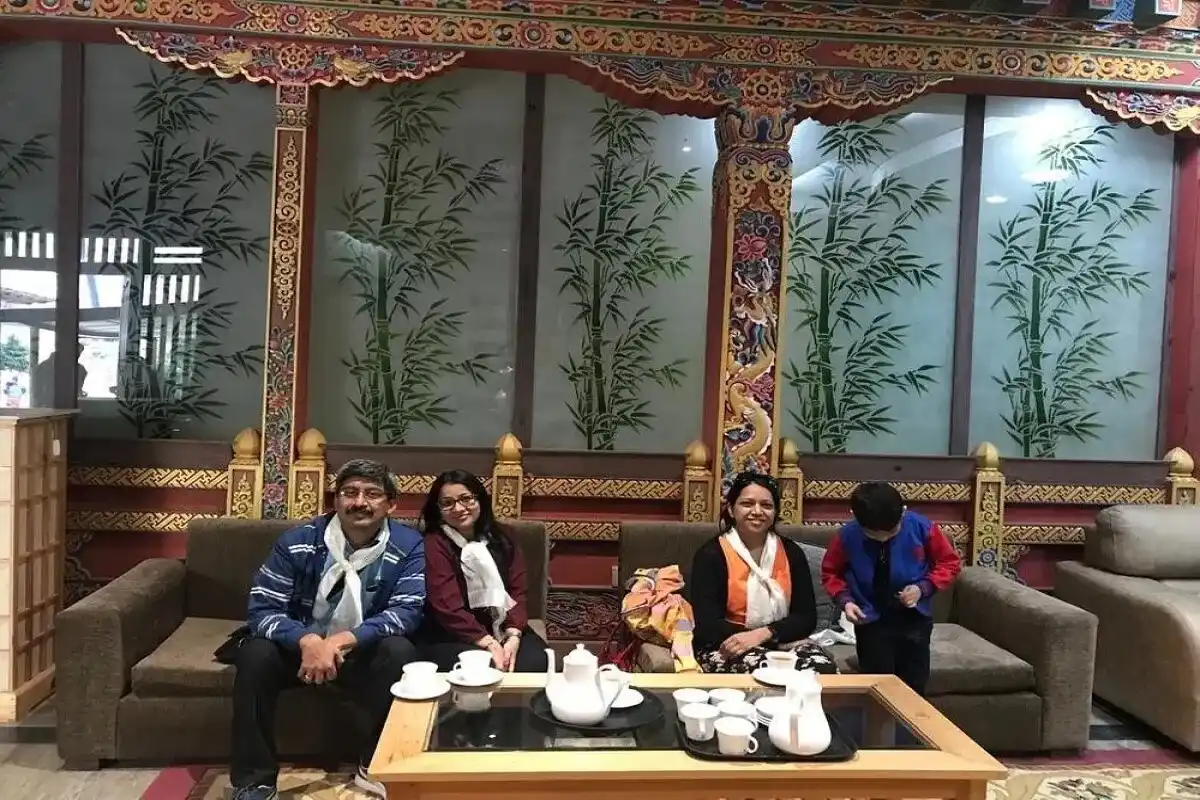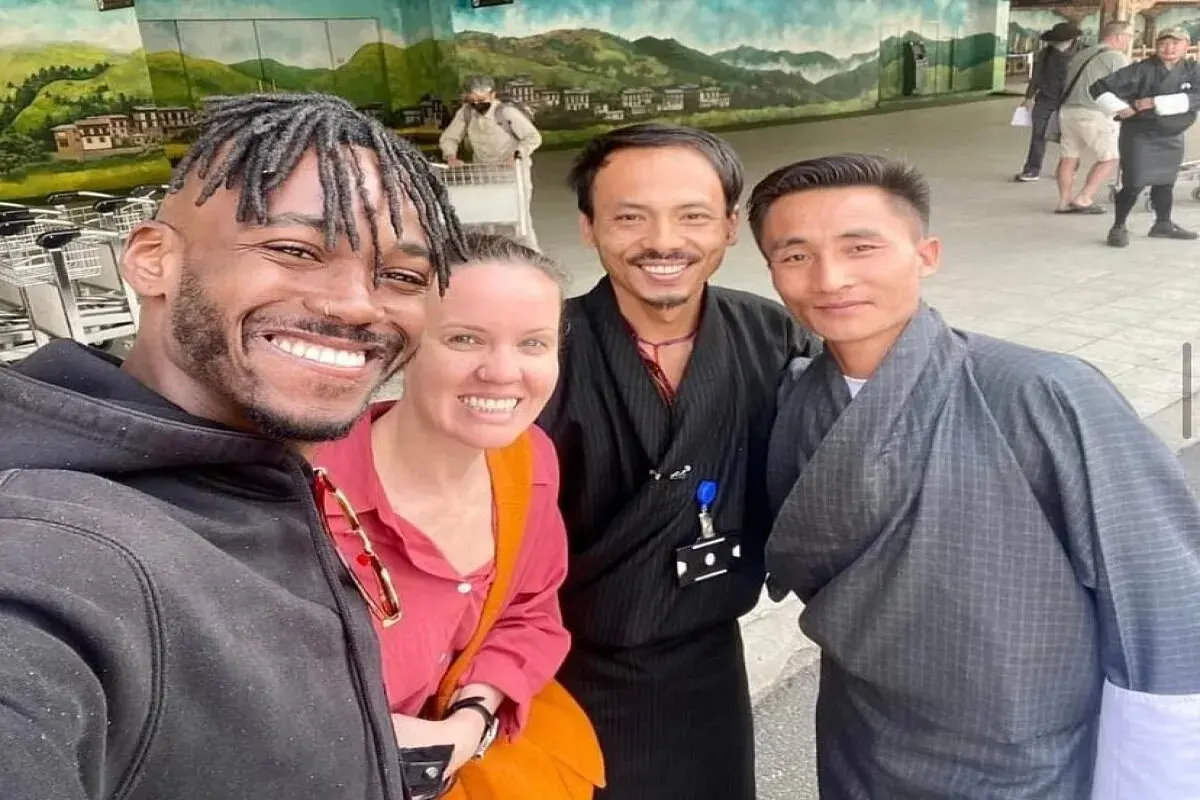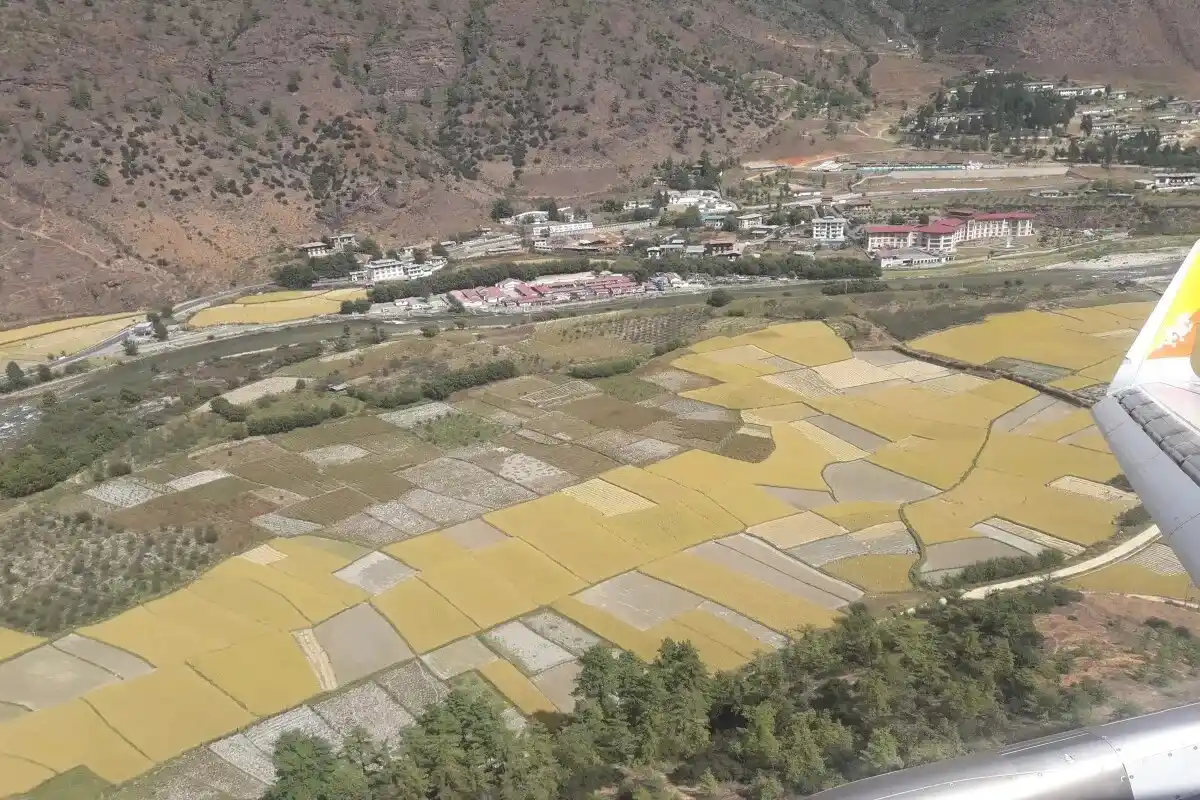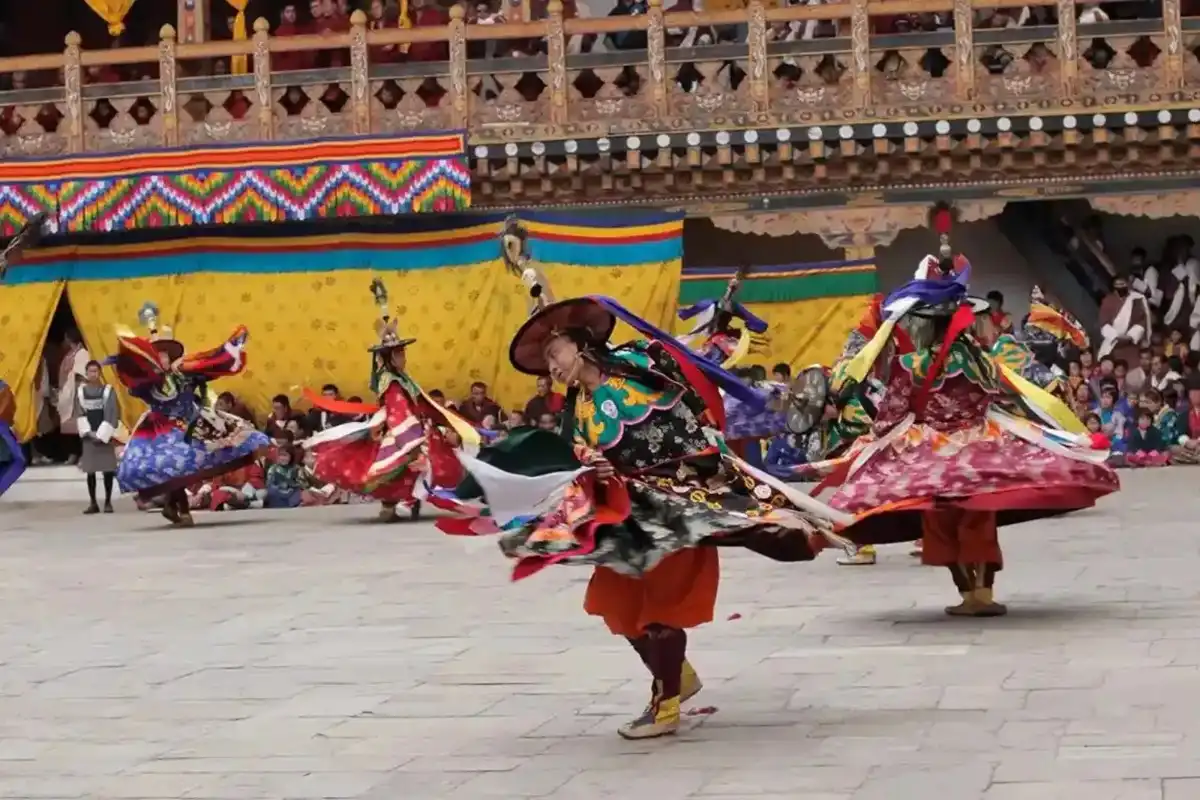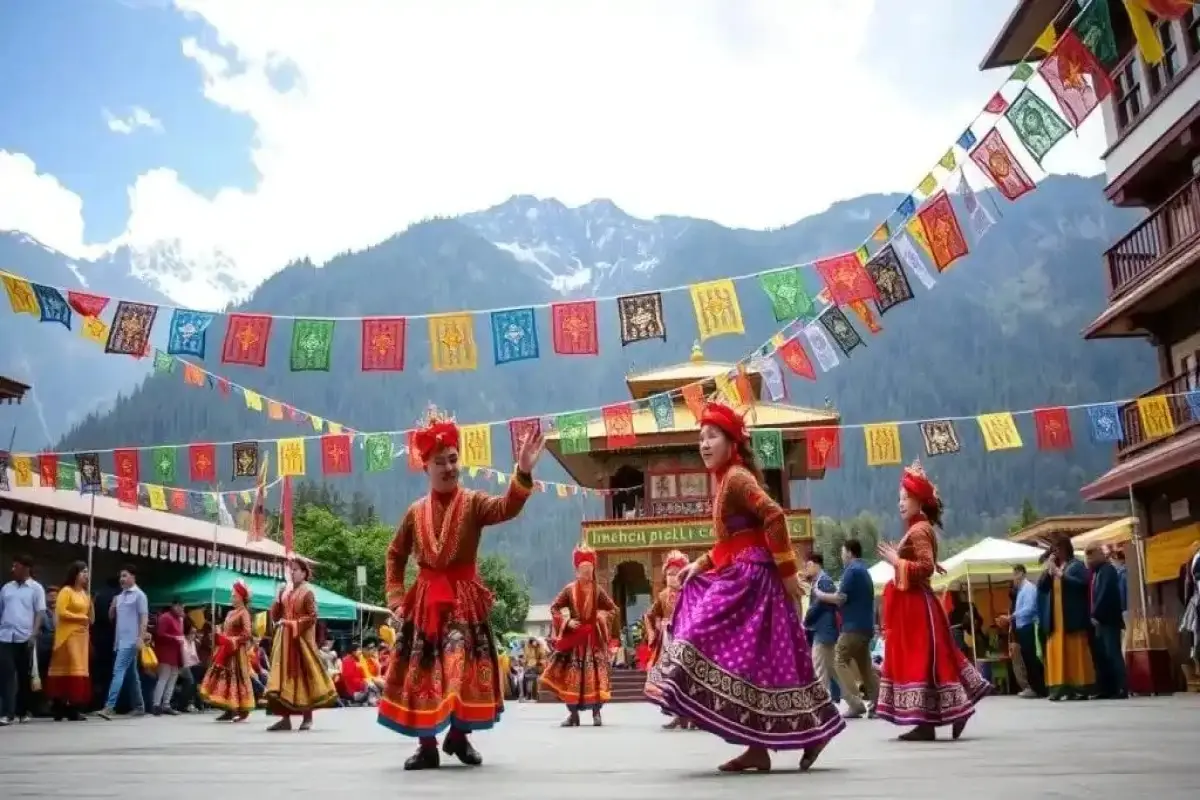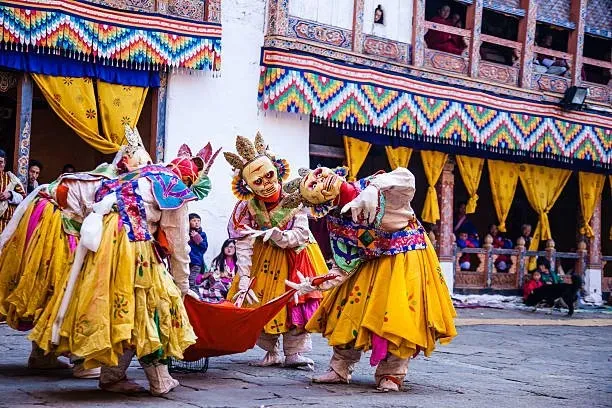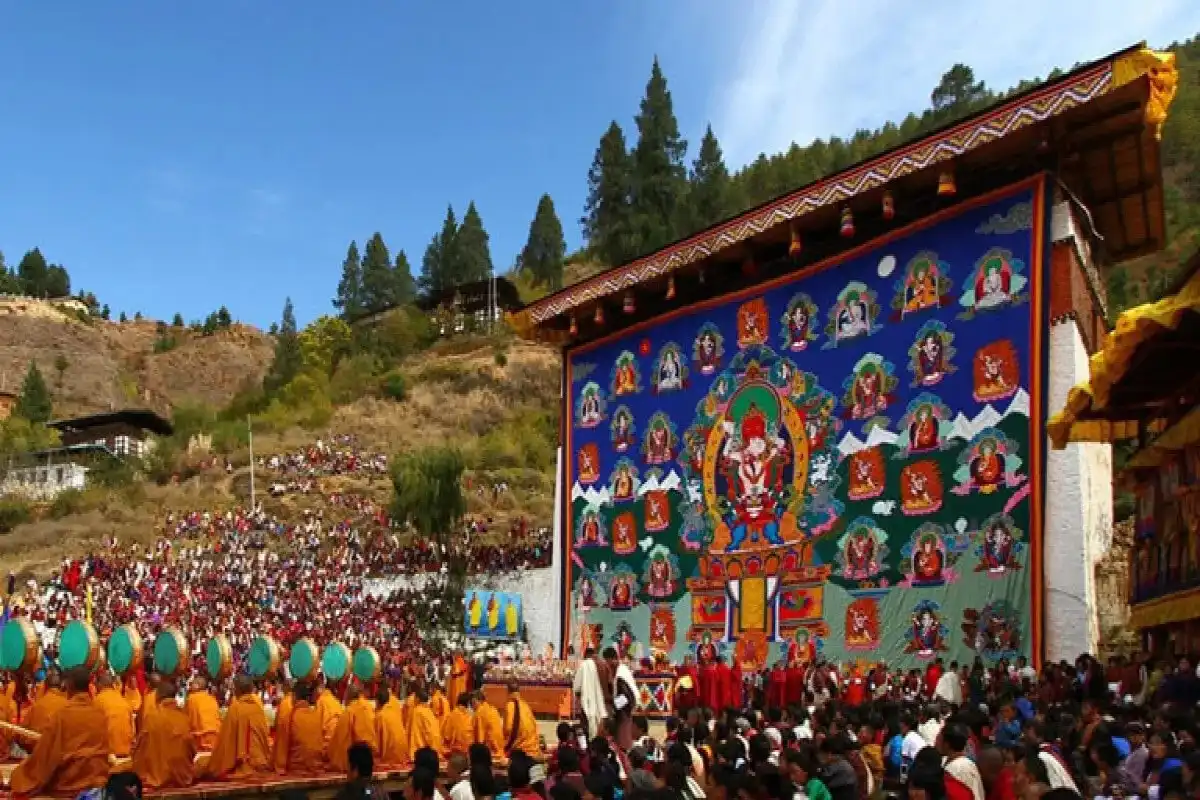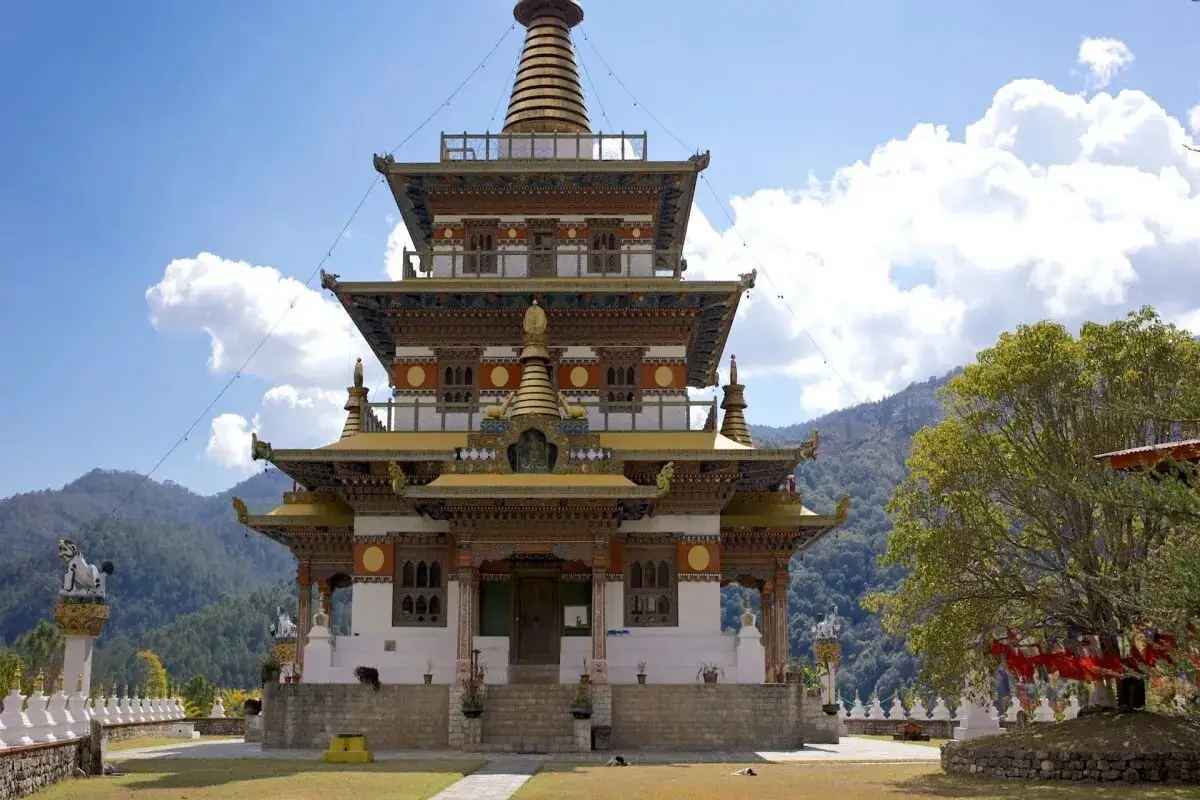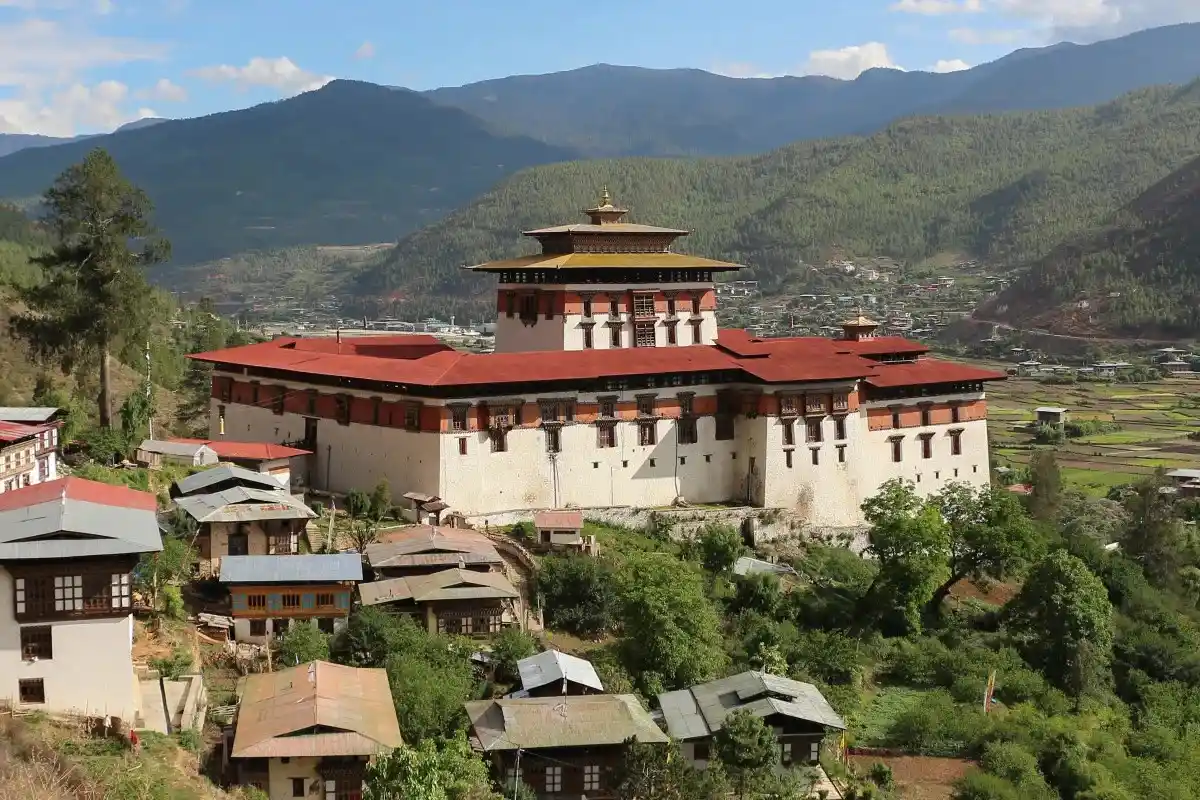Cultural Exploration of Eastern Bhutan - 7 Days
Eastern Bhutan is among the few places in Bhutan that are least explored and peaceful. It is famous for its unexplored nature, quiet villages, ancient monasteries, and kind people. Eastern Bhutan is a place that you should visit if you are a person who adores culture, spirituality, and natural beauty.
Highlights of the tour
- Visit to Historic Trashigang Dzong
- Venture into the Enchanting Villages of Merak and Sakteng
- Explore the Wildlife Wonders of Bumdeling Sanctuary
- Watch Master Weavers at Work in Khaling
- Join the Festive Spirit at Sakteng Festival
Trip Overview
This is a 10-day tour that will take you to the heart of Eastern Bhutan. You will go through green valleys, hilltop towns, and hidden villages. You will meet locals, who continue to follow their ancient traditions, observe how weavers produce beautiful fabrics, and visit the sites where religion and everyday life are strongly connected. The tour involves visits to such renowned attractions as Trashigang Dzong, Chorten Kora, and the Merak and Sakteng villages.
Every day is a new experience to explore the local festivals, sacred caves, traditional dances, and wonderful mountain views. This is not just a vacation, but an experience to get to know the cultural soul of Bhutan.
As an international traveler or a Bhutanese explorer or just someone in search of inner peace, the Cultural Exploration of Eastern Bhutan will make you inspired and fulfilled.
Highlights of the Eastern Bhutan Tour
In this 10 days Eastern Bhutan tour , you will get to explore culture , traditions and nature in a detailed way. It is also a chance of self learning ,about a kind of lifestyle they follow and can take part in weaving activities.
Visit to Historic Trashigang Dzong
The Trashigang Dzong is one of the ancient and important fortresses in Eastern Bhutan. It is built on top of a hill and gives beautiful views of the valley below. It was constructed in the 1600s, and it is in current use for both government work and religious ceremonies. Once you enter, you will notice big courtyards, silent meditation rooms, and monks in red robes. It is a peaceful place, and you can feel the history and the religious energy of Bhutan.
Venture into the Enchanting Villages of Merak and Sakteng
The villages of Merak and Sakteng are in the mountains where the Brokpa people live a very unique and simple life. They dress differently, raise yaks, and live according to the ancient traditions. You will observe their lifestyle, hear their stories, and maybe you will get to enjoy their local music and food. These villages are quiet and beautiful, with green hills and open sky.
Explore the Wildlife Wonders of Bumdeling Sanctuary
Bumdeling Wildlife Sanctuary is a peaceful and green area covered with forests, rivers, and hills. It is famous as the place that preserves rare animals, in particular, the black-necked crane that comes in winter. You will be able to walk on quiet paths, listen to the birds, and breathe the fresh mountain air. It is a perfect place to visit for nature lovers who are interested in viewing the wild beauty of Bhutan. Visiting this sanctuary will help Bhutan in its conservation of land, animals, and the environment for future generations.
Immerse Yourself in the Artistic Charm of Trashiyangtse
Trashiyangtse is a small town full of creative and calm people. It is famous for its handmade paper and wooden art. You can observe how locals make paper from natural plants and how they carve wonderful wooden products. Another beautiful place in the town is the Chorten Kora, a round white stupa that brings peace to every visitor. Trashiyangtse is a peaceful and relaxing place to visit on your tour of eastern Bhutan.
Watch Master Weavers at Work in Khaling
Khaling is a lovely village that is famous for its skilled weavers. Women here weave colorful and traditional fabrics with handlooms and old methods. You will see them carefully weaving beautiful patterns that are used for the Bhutanese dress. Visit Khaling to see how Bhutan keeps its traditions alive through hard work, patience, and strong community values.
Join the Festive Spirit at Sakteng Festival
Sakteng Festival is a joyful and colorful festival where local people wear traditional clothes and perform special dances wearing masks. These dances are performed to bring luck and safeguard the community. Visitors are free to watch and to participate in the fun. It is a beautiful way of getting to know the Bhutanese culture and how people are connected to their country, religion, and traditions.
Conclusion
A visit to Eastern Bhutan gives a great opportunity to see an untouched, peaceful, and culturally rich Bhutan. This tour lasts 10 days and takes you to the beautiful places where traditions are still alive, and people live simply connected to nature and their history. You will see ancient castles such as Trashigang Dzong, quiet communities such as Merak and Sakteng, and religious places such as Chorten Kora. Every day will provide you with some new experiences: you will be able to watch weavers working, you will be able to participate in local festivals and meet some friendly local villagers.
It is an excellent tour of the eastern part of Bhutan, which is recommended to those tourists who want to experience the unique culture of the country and enjoy calm mountain life. The streets, towns, and scenery show a new world, far from busy cities. The tour is suitable for any type of traveler, including families and older visitors, as it is not too fast or challenging.
This is a 10-day tour that will take you to the heart of Eastern Bhutan. You will go through green valleys, hilltop towns, and hidden villages. You will meet locals, who continue to follow their ancient traditions, observe how weavers produce beautiful fabrics, and visit the sites where religion and everyday life are strongly connected. The tour involves visits to such renowned attractions as Trashigang Dzong, Chorten Kora, and the Merak and Sakteng villages.
Every day is a new experience to explore the local festivals, sacred caves, traditional dances, and wonderful mountain views. This is not just a vacation, but an experience to get to know the cultural soul of Bhutan.
As an international traveler or a Bhutanese explorer or just someone in search of inner peace, the Cultural Exploration of Eastern Bhutan will make you inspired and fulfilled.
Highlights of the Eastern Bhutan Tour
In this 10 days Eastern Bhutan tour , you will get to explore culture , traditions and nature in a detailed way. It is also a chance of self learning ,about a kind of lifestyle they follow and can take part in weaving activities.
Visit to Historic Trashigang Dzong
The Trashigang Dzong is one of the ancient and important fortresses in Eastern Bhutan. It is built on top of a hill and gives beautiful views of the valley below. It was constructed in the 1600s, and it is in current use for both government work and religious ceremonies. Once you enter, you will notice big courtyards, silent meditation rooms, and monks in red robes. It is a peaceful place, and you can feel the history and the religious energy of Bhutan.
Venture into the Enchanting Villages of Merak and Sakteng
The villages of Merak and Sakteng are in the mountains where the Brokpa people live a very unique and simple life. They dress differently, raise yaks, and live according to the ancient traditions. You will observe their lifestyle, hear their stories, and maybe you will get to enjoy their local music and food. These villages are quiet and beautiful, with green hills and open sky.
Explore the Wildlife Wonders of Bumdeling Sanctuary
Bumdeling Wildlife Sanctuary is a peaceful and green area covered with forests, rivers, and hills. It is famous as the place that preserves rare animals, in particular, the black-necked crane that comes in winter. You will be able to walk on quiet paths, listen to the birds, and breathe the fresh mountain air. It is a perfect place to visit for nature lovers who are interested in viewing the wild beauty of Bhutan. Visiting this sanctuary will help Bhutan in its conservation of land, animals, and the environment for future generations.
Immerse Yourself in the Artistic Charm of Trashiyangtse
Trashiyangtse is a small town full of creative and calm people. It is famous for its handmade paper and wooden art. You can observe how locals make paper from natural plants and how they carve wonderful wooden products. Another beautiful place in the town is the Chorten Kora, a round white stupa that brings peace to every visitor. Trashiyangtse is a peaceful and relaxing place to visit on your tour of eastern Bhutan.
Watch Master Weavers at Work in Khaling
Khaling is a lovely village that is famous for its skilled weavers. Women here weave colorful and traditional fabrics with handlooms and old methods. You will see them carefully weaving beautiful patterns that are used for the Bhutanese dress. Visit Khaling to see how Bhutan keeps its traditions alive through hard work, patience, and strong community values.
Join the Festive Spirit at Sakteng Festival
Sakteng Festival is a joyful and colorful festival where local people wear traditional clothes and perform special dances wearing masks. These dances are performed to bring luck and safeguard the community. Visitors are free to watch and to participate in the fun. It is a beautiful way of getting to know the Bhutanese culture and how people are connected to their country, religion, and traditions.
Conclusion
A visit to Eastern Bhutan gives a great opportunity to see an untouched, peaceful, and culturally rich Bhutan. This tour lasts 10 days and takes you to the beautiful places where traditions are still alive, and people live simply connected to nature and their history. You will see ancient castles such as Trashigang Dzong, quiet communities such as Merak and Sakteng, and religious places such as Chorten Kora. Every day will provide you with some new experiences: you will be able to watch weavers working, you will be able to participate in local festivals and meet some friendly local villagers.
It is an excellent tour of the eastern part of Bhutan, which is recommended to those tourists who want to experience the unique culture of the country and enjoy calm mountain life. The streets, towns, and scenery show a new world, far from busy cities. The tour is suitable for any type of traveler, including families and older visitors, as it is not too fast or challenging.
Short Itinerary
Arrive in Paro, visit National Museum and Paro Dzong, explore Paro town
Travel to Trashigang, visit ancient Trashigang Dzong and enjoy valley views
Explore Radhi Village and Trashigang market, experience traditional weaving
Drive to Mongar, visit Mongar Dzong and Drametse Village for cultural dance
Visit Khaling village and National Handloom Centre, learn traditional weaving
Explore Gomphu Kora cave, Rangjung Monastery and rural life of Trashigang
Visit Trashiyangtse town, explore Chorten Kora and traditional paper-making
Explore Yalang Goemba and Kheri Monastery, enjoy serene hilltop temples
Return to Paro, relax, shop, and enjoy farewell dinner with the group
Departure from Paro with memories of Eastern Bhutan’s peaceful charm
Cultural Exploration of Eastern Bhutan Itinerary
Once you arrive at Paro International Airport, our company representatives will be there to welcome you. From the airport, drive to your hotel to rest. In the afternoon, explore the National Museum of Bhutan, where you will be able to learn everything about the history, culture, and geography of Bhutan. Then head to Paro Dzong, a large fortress that has a great view of the valley. You can also walk in Paro town, explore local shops, and visit traditional houses. In the evening, have an enjoyable Bhutanese dinner and be ready to have your adventure visiting the calm and serene Eastern Bhutan, which is going to be tomorrow.
You will be traveling to Trashigang today, either by plane or by driving through the mountainous route. Trashigang is among the largest districts of Bhutan, situated in the East. After you reach, you can visit the popular Trashigang Dzong. The dzong is very ancient and still in use by the monks and the government offices. You are going to learn about its history and enjoy wonderful panoramas of the valley.
Today you are going to visit villages and markets around Trashigang. Visit Radhi Village, which is a beautiful place, famous for its green rice fields and traditional weaving. The village is known for making Bura textiles, a special type of silk cloth that people wear on special occasions. You will also meet the lovely villagers and learn how they make the fabric on traditional handlooms. In the afternoon, you can visit Trashigang market, which is a busy place where people from various villages come to sell vegetables, clothes, and handmade products. This day provides you with the actual feel of the village life in the eastern part of Bhutan and a chance to know about their culture and traditions in a fun and friendly manner.
Start your day by driving to Mongar, which is a modern but culturally rich town. The roads provide the scenery of terraced fields, waterfalls, as well as distant mountain ranges. Once you arrive in Mongar, visit the magnificent Mongar Dzong, which is constructed in the traditional Bhutanese architecture without using nails. In the afternoon, drive to Drametse Village where the masked dance called “Drametse Ngacham” is considered a part of Bhutan festivals. Get to know more about the dance, visit the monastery, and experience the peaceful life of this beautiful village, then drive back to Mongar to spend the night.
You will travel to Khaling today, a village that is famous because of its beautiful handwoven textiles. The National Handloom Development Centre is a place where you should visit to witness the weavers who create colorful fabrics with old techniques. You may ask questions, observe the process of weaving, and even try it yourself. Learn how natural colors and designs are applied to make traditional garments. Such a visit will make you realize how weaving is valued in Bhutan. You may purchase the handmade products directly from the weavers. Afterward, you can have a rest and a pleasant view of the countryside.
Today, you will explore the villages near Trashigang to learn more about rural life. Visit Gomphu Kora, a holy site that has a cave in which Guru Rinpoche meditated. It is a calm and spiritual location. Lots of pilgrims visit here to get blessed. Then, visit Rangjung Woesel Choeling Monastery, where monks learn and pray. Visit the villages around and speak with the local people. Get to know about their simple life, their way of farming, and family customs and traditions. It is a peaceful and spiritual day, which makes you feel close to the rich culture of Bhutan.
Have breakfast and then visit the peaceful town of Trashiyangtse. There are rivers, valleys, and forests to be seen on the way. After reaching there, you can go to Chorten Kora, which is a beautiful white stupa that is believed to bring peace and blessings. You will also get to see a traditional paper-making center where locals create handmade paper out of tree bark and water. The town is famous because of its skilled artists and its peaceful environment. Slowly walk through the town, meet local artisans, and relax in the peaceful environment before getting to bed.
Explore peaceful temples such as Yalang Goemba, Kheri Goemba. These places are on the hills and give a beautiful view of the valley. Walk around, spin prayer wheels, and listen to monks chanting. You can also visit smaller shrines and see local monks. They often tell stories and give blessings to visitors. It's a good day for a quiet and learning about Bhutan's strong Buddhist beliefs. The fresh air and beautiful scenery also enhance the experience and make it even more relaxing.
Today, you will head back to Paro. You fly along the beautiful mountains and get to witness the last moments of the peaceful nature of the Eastern Bhutan hills. After you arrive at Paro, you will have to check into your hotel and take a rest for a while. You can then go on a walk around Paro town, visit the local shop, or revisit any of your favorite places from the first day. In the evening, have a farewell dinner with your trekking partners. It is a good time to share your favorite experiences in Bhutan, take a group photo, and talk about the amazing things you have found in Bhutan.
After breakfast, you will head to Paro International Airport. Say goodbye to Bhutan, and you bring not only photos but peaceful memories of cultures, traditions, mountains, and moments of quietness. When you go, take away the memories of smiling people in the villages, quiet temples, and mountains, and the warm spirit of the Bhutanese. This experience will remain in your heart even after you get back home.
Know Before You Travel
-
Cultural Soul of Eastern Bhutan:
Eastern Bhutan is a region where the tradition, nature, and spiritual life come together beautifully. The eastern part of the country is peaceful, unexplored, and closely connected to its traditions, unlike the busy western part of the country. Here, the people continue to live a simple life, follow old traditions and are very welcoming. Villages such as Merak, Sakteng, and Radhi are full of culture and are not just tourist attractions.
There are beautiful monasteries on hilltops, colorful festivals in remote valleys, and skilled weavers creating handmade fabrics. It is even more special in terms of landscape with green hills, rivers, forests, and rare wild animals such as the black-necked crane. It is the place where you can relax, breathe the fresh air, and feel the peace.
A tour to the East of Bhutan is not only a visit to new locations but also new experiences of living a life that values harmony, kindness, and nature.
FAQs for Cultural Exploration of Eastern Bhutan
Yes, most foreigners need a visa to enter Bhutan. When you book this tour through our travel agency, we will assist you in acquiring the visa and all the permits required in Eastern Bhutan.
The best time to visit Eastern Bhutan is Spring and Autumn. The weather is pleasant, the sky is clear, and there are festivals too in these seasons.
Yes, the trip is suitable for older people and children. Families with children and senior travelers will find a relaxing and welcoming atmosphere, meet with locals, watch handicraft being woven, and get to know more about Bhutanese culture.
Pack comfortable clothes, a warm jacket for cold mornings and evenings, walking shoes, sunscreen, and a hat. If you go in winter, bring warm jackets and coats.
You will enjoy a combination of Bhutanese, Indian, and continental cuisine. Food typically consists of rice, vegetables, meat, and lentils. And in case you are a vegetarian or have any food requirements, please inform our guide in advance.
Yes, mobile networks are accessible in most towns and hotels. But there are weak signals or no signals in some remote villages.
Yes, ATMs are available in major towns such as Trashigang and Mongar. However, it is good to have some cash, especially when making small purchases in villages.
Yes, during this tour, you will have many opportunities to interact and communicate with local people, villagers, monks, weavers, and local guides. It is a great way to know more about the Bhutanese culture and life.
You need a visa and all necessary permits for your trip. These documents can not be received on the day of your arrival, so they must be processed before coming here. After you book a trip with us, we will manage these papers for you. Your Bhutan visa is arranged by Orrog as part of the package.
The main way to come to Bhutan is through Paro International Airport, which is well-connected to cities like Bangkok, Delhi, Kathmandu, and Singapore. Most people arrive by air, but if you plan to come via road, you can enter through Phuentsholing, located on the southern border with India, which is the most commonly used entry point.
It is recommended to apply for the visa at least 20 days before your planned departure date so that there is enough time for processing your Bhutan visa, finalizing your itinerary, and arranging your guides and transportation. Although visa processing itself is relatively fast once payment is received, early preparation helps avoid delays and ensures availability, especially during peak seasons (spring and autumn).
You don’t require a passport-size photo for the visa, but it is wise to carry at least 2–4 recent passport-sized photographs during your trip. These may be needed for local permits, registration, or when applying for a local SIM card upon arrival in Bhutan.
Yes, you can lengthen your stay in Bhutan either before or after your trip. Bhutan’s tourism model requires visitors to pay a Sustainable Development Fee (SDF) and a daily package cost, so any extra days will involve additional charges. Extensions are a great opportunity to explore cultural sites in Paro, Thimphu, or even add another short trip or day hike.
Yes, Bhutan requires full tour payment in advance before your visa can be processed and issued. The government of Bhutan regulates this policy to ensure that all travel arrangements are confirmed through a licensed Bhutanese tour operator. We are a licensed tour operator that ensures you have everything you need for a trouble-free trip.
Any personal expenses are not covered in the package like:
- Tips for your guide and other staff
- Bottled drinks and snacks(personal expense)
- Souvenirs or local crafts
Credit cards are easily accepted in major cities like Paro and Thimphu. But in remote areas, you may not have access to a card or an ATM. So, it is best to carry some cash before heading for the trip.
Tipping is not mandatory, but it is a widely appreciated gesture and a customary way to show gratitude for good service. The tipping guideline would be to give USD 5-10 per day as a tip for the guides and other staff.
Paro International Airport is the only international airport in Bhutan. It is well connected by flights from cities like Bangkok, Delhi, Kathmandu, and Singapore.
Yes, airport pick-up and drop-off are included in the package. We will have your guide and driver meet you at the airport and transport you to your hotel.
While Bhutan's roads are mostly paved, some parts are narrow, winding, and occasionally affected by weather. However, we ensure your travel is safe, well-maintained, and driven by an experienced professional throughout the journey.
The Bhutanese Ngultrum is used in Bhutan. All local transactions during the trip will be in BTN.
US Dollars (USD) are generally accepted at larger hotels, souvenir shops, and tour operators, particularly in Paro and Thimphu. However, it’s advisable to convert your currency to BTN for general purchases in rural areas. Other currencies like the Euro or the Pound are not commonly accepted directly.
No, credit or debit cards are not accepted on the trip, as it takes you through remote regions with no banking or electronic payment access. All trip-related payments like accommodation, meals, permits, etc, are paid in advance.
You can exchange foreign currency at the Paro International Airport, at banks, or through licensed money changers in cities like Thimphu and Paro. It's best to exchange enough cash before heading out on the trip.
The national language is Dzongkha, but many Bhutanese also speak English. If you speak English and are worried about communicating with the local people, you will have your guide as a translator.
Yes, all licensed tour guides in Bhutan are required to speak fluent English. Many are also trained in other languages such as German, Japanese, or French. Communication during the trip will be smooth and clear in English.
Most signboards, tourist maps, and information brochures are written in English, especially in tourist destinations like Paro, Thimphu, and trailheads. Directional signs along routes are often labeled in both Dzongkha and English.
No, learning Dzongkha is not at all needed for the trip, but knowing a few basic words like "Kuzu zangpo la" (Hello) or "Kadrinche la" (Thank you) is a good way to interact with the locals.
Language barriers are minimal, as your guide will handle all communication with locals and support staff. Your guide will translate for you during your interaction with the locals.
You can learn about the Bhutanese culture through local interactions, homestay visits, cooking classes, traditional art workshops, and attending local festivals and religious ceremonies.
To greet people, you can greet with locals “Kuzu zangpo la” (Hello) by performing a slight bow. Most common greetings include physical greetings, such as shaking hands less visible, especially in rural areas.
Yes, but remember to seek permission, especially when taking photos of monks, locals, or temples. Please note that clicking photos is not allowed at most religious sites.
Visitors should dress modestly and respectfully. This means:
- Covering shoulders and knees
- Removing hats and sunglasses
- Not wearing shorts or sleeveless tops
This applies to both men and women.
Yes, Bhutanese society is deeply rooted in Buddhism and tradition. Here are some key taboos:
- Do not point your feet at people or sacred objects
- Never touch anyone on the head, as it is considered sacred
- Walk clockwise around temples, stupas, and religious monuments
- Avoid public displays of affection
While gifts are not expected, they may be accepted graciously if given with respect. It is advisable to consult with the guide before giving out anything.
Bhutan typically uses Type C, Type D, and Type G electrical outlets. Standard safe voltage is 230V and frequency is 50Hz; therefore, ensure that your equipment is compatible with this voltage.
Indeed, it is highly advised to take along a universal travel adapter, particularly one to fit a variety of types of plugs, because plugs can be different in a hotel or a guesthouse.
Bhutan follows Bhutan Time (BTT), which is UTC/GMT +6 hours. This time zone remains consistent throughout the year.
No, Bhutan does not observe daylight saving time. The country maintains the same time year-round.
Bhutan is 30 minutes ahead of India. For example, 12:00 PM in India is 12:30 PM in Bhutan.
Yes, souvenirs can be bought in Paro or Thimphu before or after the trip.
Some popular souvenirs include hand-woven textiles (kira and gho fabric), prayer flags, thangka (religious scroll) paintings, handmade paper products, traditional masks, and Buddhist artifacts.
You can do some gentle bargaining in local street markets. However, in government-run shops and fixed-price stores, prices are usually non-negotiable.
Only some larger shops in cities like Paro and Thimphu accept credit cards. The remote areas might not have a card payment option, so we suggest that you carry some cash.
Yes, you can easily purchase a SIM card upon arrival in Bhutan. We will assist you with the process, and you'll need a passport copy and a passport-sized photo.
No, internet access is not available during the trip. However, Wi-Fi is available in hotels in Paro and Thimphu before and after the trip.
B-Mobile (by Bhutan Telecom) and TashiCell are the two main service providers. B-Mobile tends to have better coverage in rural and mountainous areas
Since the weather can be unpredictable and temperatures can vary drastically, layered clothing is essential. You should pack:
- Base layers (thermal tops and bottoms)
- Insulating layers like fleece or down jackets
- Waterproof and windproof outer layers
- Warm hats, gloves, and neck gaiters for freezing conditions
- Moisture-wicking socks and weatherproof trekking boots
Nighttime temperatures can be extremely cold, especially at high-altitude places. So you need to have enough clothing to keep you warm.
The weather is clear with mild daytime temperatures during spring and autumn.
Reviews & Ratings
-
Guarantee -
Thimphu,Bhutan -
975+17160228
Ready to Explore Bhutan?
Start your journey today and discover the magic of Bhutan with our expert guides and carefully crafted tours.
Book This Trip
-
No booking or credit card fees -
Best price guarantee -
Full customize trip
Ask a Question
Feel free to ask us anything about this tour. A travel expert will then get back to you as soon as possible
Ready to Explore Bhutan?
Start your journey today and discover the magic of Bhutan with our expert guides and carefully crafted tours.

